#2020 Ford Edge Concept
Explore tagged Tumblr posts
Photo
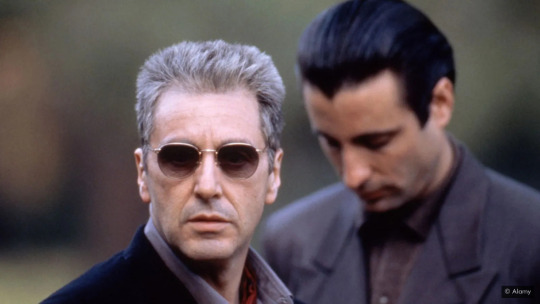
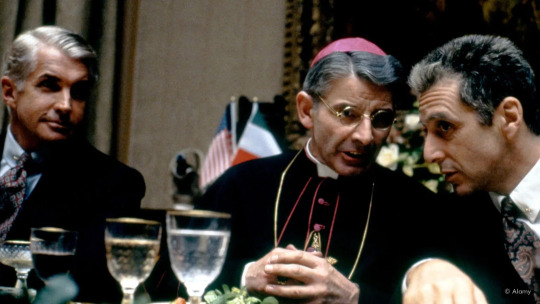
Why The Godfather Part III has been unfairly demonized
By Caryn James1st December 2020
he mafia trilogy ended with a closing chapter that has long been vilified. But as a new recut is released, 30 years on, Caryn James says it deserves to be re-evaluated. T
The final part of the Godfather trilogy is considered such an artistic disaster that you'd think Francis Ford Coppola had forgotten how to make a film in the 16 years that followed The Godfather Part II (1974). Part III's most famous dialogue – Al Pacino as the aging Mafia don Michael Corleone snarls, "Just when I thought I was out, they pull me back in" – has become an easy laugh line.
But 30 years after its release, it is time to rescue Godfather III from its terrible reputation. Pacino's eloquent, fiery, knowing central performance is supported by several bravura set pieces that are mini-masterpieces in themselves. With deliberate echoes of the earlier Godfather films, there is singing and dancing at a family party, a bold murder during the San Gennaro street festival, a tragedy on the steps of an opera house in Sicily.
In the film’s confusing main plot, Michael gets tangled up in dealing with the Vatican
Hindsight alone would tell us how seriously the film has been undervalued, even without Coppola's newly restored, re-edited and renamed version. It now has the title Mario Puzo's The Godfather, Coda: The Death of Michael Corleone. Calling it a coda emphasises its connection to the earlier instalments, and even hints at its lesser stature. And the word 'death' signals its dark inevitability, although the meaning of that word is slipperier than it first appears.
Twelve minutes shorter, it rearranges some key episodes, eliminates a few minor scenes and trims a line here or there. But until its altered ending, it is fundamentally the same film, better in parts than as a whole. It is too flawed to come close to the accomplishments of The Godfather (1972) or its sequel, both among the most towering and influential films of the 20th Century. They have penetrated the culture, from their language ("I'm going to make him an offer he can't refuse") to their quintessentially American story of immigration and upward mobility. But the new version clarifies Coppola's epic vision, revealing how much the Corleone story was always Michael's, a deeply moral saga of guilt and redemption. He just happened to be a mob boss.
For me the tragedy of The Godfather, which is the tragedy of America, is about Michael Corleone – Francis Ford Coppola
Coppola was always lucid about the trilogy's vision, even when others were confused. "For me the tragedy of The Godfather, which is the tragedy of America, is about Michael Corleone," he says in the extras on a DVD set of the three films released in 2001. He wanted The Death of Michael Corleone to be the title back in 1990, but Paramount, the studio releasing it, did not. The film's initial reception was measured disappointment, not dismissal or horror as we now assume. Roger Ebert actually loved it. Pauline Kael did not love or hate it, but offered the withering, condescending assessment. "I don't think it's going to be a public humiliation." Expectations were high because of the legacy of the earlier films, yet low because Part III came with a whiff of desperation and of selling out. Coppola had resisted making another Godfather for years, then wrote the screenplay (with Mario Puzo) and edited it in a rush to meet its Christmas Day release. It even got seven Oscar nominations, including best picture and director. It is an odd example of a movie whose reputation has declined over the decades.
Why the film is misunderstood
Then and now, the series has largely been misunderstood. Crime movies like Coppola's and Martin Scorsese's are so seductive that audiences have embraced them for apparently glamorising the love of raw power and the concept of honour among thieves. Beneath the Mafia-friendly surface, though, they are built on ethical themes their more hot-headed characters don't grasp. The Godfather Coda tells us that crime really doesn't pay when you're ready to search your soul. The young Michael struggles with the idea of killing and crime in the first Godfather. The consequences of his decision are central to Part III, which takes place in 1979, 20 years after the events of Godfather II. Michael, a billionaire living in New York, has made his businesses legitimate and is left to grapple with his guilt for so many crimes, especially ordering the murder of his brother Fredo, who betrayed him.
The film still has problems that no amount of editing can change. In a needlessly confusing main plot, Michael tries to take over a European conglomerate called International Immobiliare. By buying the Vatican's shares, he'll be bailing out the corrupt Vatican bank. The family part of the story revolves around Michael's nephew, Vincent Mancini, the illegitimate son of his brother Sonny. Andy Garcia is as good a Vincent as you could hope for, handsome, swaggering, rough around the edges, dynamic on screen. But his character never makes much sense. Vincent has his father's explosive temper and appetite for violence, but somehow goes from a not-so-bright thug to a shrewd, controlled crime strategist in a matter of months. His change is far from the engrossing, methodical character trajectory that takes the young Michael from idealist to murderer in the first Godfather.
And the film's most severely criticised element is no better than anyone remembers. Winona Ryder, who had been set to play Michael's daughter, Mary, dropped out weeks before filming started and was replaced with unabashed nepotism by Coppola's teenaged daughter, Sofia. Today, we know Sofia Coppola as a brilliant director, but it's easy to see why her amateurish performance made her another target of Godfather III jokes, particularly for the unintentionally awkward and passionless romance between Mary and her cousin Vincent. Coppola actually snipped a couple of Sofia's lines in the new version.
He makes a major change at the start of the re-edited film, eliminating the lovely original beginning. It set an elegiac tone by showing images of the abandoned family house in Lake Tahoe from Part II, and includes a flashback to Fredo's death, while Nino Rota's familiar soundtrack music evokes the past. The new version begins with a duplicitous archbishop soliciting Michael's help for the Vatican, a scene originally placed later in the film. The change highlights the finance plot without making it any clearer.
The exhilarating start
But the film soon picks up with its true, exhilarating beginning. Several generations of Corleones, along with friends and business associates, gather at a party celebrating Michael. His sister, Connie, sings an Italian song, while shady-looking visitors pay homage to Michael in his office. He now has bristly grey hair and a lined face, and controls his family and business with authoritarian power. The extravagant 30-minute sequence echoes Connie's wedding at the start of The Godfather, and the First Communion party in Lake Tahoe that began Godfather II. Michael's office even has the same light slanting through the blinds that we saw in his father's office in the first Godfather, when Marlon Brando as Vito Corleone received visitors. Throughout, these call backs to the previous films add resonance while trenchantly revealing how things have changed. Michael is burdened by conscience in a way Vito never was. "I don't apologise," Vito tells Michael near the end of The Godfather, justifying his brutality because he was trying to save his family. Godfather III is all about Michael's need to atone.
Al Pacino's performance may have become an object of derision, but he knows what he's doing.
The party scene flows easily as it brings every character up to date. Diane Keaton is as deft as ever as Michael's ex-wife Kay, who pleads with him to allow their son, Tony, to pursue a career as an opera singer. Kay can be chilling. "Tony knows that you killed Fredo," she warns Michael. Yet she has never got over him, as we see in a later scene when they have a tearful tête-à-tête in Sicily, a scene Pacino and Keaton make painfully real.
Connie, played with glorious sharpness and wit by Talia Shire, has morphed into Lady Macbeth. Mafia princesses can never run things, but they can pull the strings. It's Connie who ruthlessly tells Vincent, "You're the only one in this family with my father's strength. If anything happens to Michael I want you to strike back." She has asked the right person.
Vincent is central to many of the set pieces. During a meeting of Mafia heads in Atlantic City, when Michael announces he is out of the crime business, a helicopter approaches the window and shoots most of them dead. Vincent rushes Michael, the main target, to safety. The intrigue and rapid-fire violence in the perfectly orchestrated scene might obscure the real point: Michael can't escape his past. That attack causes his cry: "Just when I thought I was out..." Pacino's performance may have become an object of derision, but he knows what he's doing. He is raw and angrily over-the-top in some scenes, but modulates those outbursts with quieter moments. When a stress-induced diabetic attack sends him to the hospital, in his delusional state he calls out Fredo's name. Pacino shows us a conflicted Michael, weakened yet clinging to power.
The power of the re-edited finale
The tone becomes more ominous and the themes more spiritual when the entire family goes to Sicily for Tony's opera debut. (There are spoilers here, but the time limit on spoilers has expired after 30 years.) Michael grapples with the Sicilian Mafia, for reasons linked to the Immobiliare deal, but that is less important than his inner crisis. He makes a confession to a cardinal, breaking down in tears as he says, "I'm beyond redemption." When his protector, Don Tommasino, becomes another victim of Michael's power struggle, he sits by the coffin and says to God, "I swear on the lives of my children, give me a chance to redeem myself and I will sin no more." In this version, Coppola eliminates lines in which Michael asks why he is feared and not loved, removing that plea for the audience's sympathy. Michael gives Vincent control of the family, but does he really have a clear conscience when he knows too well the vengeance Vincent will plan?
The Trump era has been full of Godfather references; Trump himself regularly attacks CNN's Chris Cuomo by calling him Fredo.
That revenge plays out in the elaborate, gripping final sequence at the opera, a counterpart to one of the most famous episodes from The Godfather, when a baptism is intercut with a series of murders. That first sequence was about Michael's rise to power; now he suffers the consequences. While the family watches Tony on stage, Coppola weaves in scenes of Vincent's crew settling scores. One shoots an enemy who plummets off a beautiful spiral staircase. Another murders a rival by stabbing the man's own eyeglasses into his neck. At the opera, hitmen are after Michael, which leads to the shooting on the steps, and a bullet meant for him that kills Mary. For him there is no coming back from that, no possible way to forgive himself.
As the film ends, Coppola makes a brilliant editing choice. The original ending flashed ahead years to the elderly Michael, sitting alone in a gravelly yard as the camera closes in on a face still full of desolation and sadness. He falls to the ground, obviously dead. With a tiny cut, Coppola transforms the meaning of the scene. It now ends with the close-up of Michael's face, still alive. Living with his guilt is his true death, a death of the soul and of hope. Coppola adds text at the end, which says: “When the Sicilians wish you ‘Cent'anni’... it means ‘for long life’... and a Sicilian never forgets.” Michael is doomed to a long life of remembering.
Godfather, Coda restores Coppola's original darker vision, but one element creates a jolt even he couldn't have seen coming. The locations listed in the end credits include Trump Castle Casino Resort in Atlantic City, where the exterior of the helicopter attack was shot. The Trump era has been full of Godfather references. Some are from mainsteam media, including a 2018 Atlantic Magazine article with the headline Donald Trump Goes Full Fredo, comparing a Trump tweet saying that he is “like, really smart” to Fredo famously insisting in Godfather II, “I'm smart! Not like everybody says, like dumb, I'm smart!” Similarly, Twitter trolls routinely mock the president's circle and his grown children as Fredos, portraying them as weak and bumbling like the character, including pasting Donald Trump Jr’s head on a photo of Fredo's body. Donald Trump himself regularly attacks CNN's Chris Cuomo by calling him Fredo. Godfather II even turned up in court documents charging Trump's advisor Roger Stone with obstructing justice, citing an email in which Stone asked someone to protect him the way Frankie Pentangeli covered up for the Corleones. Today the location credit lands like a coda to the end of the Trump presidency, and offers a reminder of how influential the Godfather films have been, even when they were embraced for all the wrong reasons.
Mario Puzo's The Godfather, Coda: The Death of Michael Corleone is available on BluRay and streaming from 8 December.
Love film and TV? Join BBC Culture Film and TV Club on Facebook, a community for cinephiles all over the world.
If you would like to comment on this story or anything else you have seen on BBC Culture, head over to our Facebook page or message us on Twitter.
And if you liked this story, sign up for the weekly bbc.com features newsletter, called The Essential List. A handpicked selection of stories from BBC Future, Culture, Worklife and Travel, delivered to your inbox every Friday.
https://www.bbc.com/culture/article/20201201-why-the-godfather-part-iii-has-been-unfairly-demonised
https://www.bbc.com/culture/article/20201201-david-fincher-hollywoods-most-disturbing-director
8 notes
·
View notes
Text
2020 Ford Edge Concept, Engine Specs, Price Rumor
2020 Ford Edge Concept, Engine Specs, Price Rumor
[spinomatic_spintax no_refresh=1]
2020 Ford Edge Concept, Engine Specs, Price {Rumor|Gossip}– Small refreshment {will probably be|will likely be|will most likely be|might be} {made|created|produced|manufactured} on the new 2020 Ford Edge. The popular vehicle is {certain to|sure to|guaranteed to} get {almost|nearly|practically|virtually} a {similar|comparable|very similar|related} qualities as its…
View On WordPress
0 notes
Text
2020 Ford Edge Rumors
2020 Ford Edge Rumors
2020 Ford Edge Rumors – The 2019 Ford Edgehas joined the 2nd era and has just been completely rejuvenated. The carmaker has added the all-new Edge ST, the higher-performance variation which contains exchanged the past Sports trim degree. Now, it is only accessible with two types of engines among which the inline-4 model is now located in all the other versions although the ST is powered by s…
View On WordPress
#2020 Ford Edge Concept#2020 Ford Edge Price#2020 Ford Edge Redesign#2020 Ford Edge Release Date#2020 Ford Edge Rumors#2020 Ford Edge Spesification#2020 Ford Edge Test Drive
0 notes
Text
2020 Ford Edge Hybrid And Redesign
2020 Ford Edge Hybrid And Redesign
The forthcoming 2020 Ford Edgeis a mid-size crossover that gives a spacious interior, more easy-to-use infotainment system, and various engine possible choices. The visuals are already revamped, with a couple of interior changes and incorporating more safe practices devices. The collection of safety measures is prolonged, and Ford is professing that the new Edge gives you the most typical vehicle…
View On WordPress
#2020 Ford Edge Arrival#2020 Ford Edge Availability#2020 Ford Edge Awd#2020 Ford Edge Baltic Sea Green#2020 Ford Edge Black#2020 Ford Edge Brochure#2020 Ford Edge Build#2020 Ford Edge Build And Price#2020 Ford Edge Canada#2020 Ford Edge Cargo Space#2020 Ford Edge Changes#2020 Ford Edge Colors#2020 Ford Edge Concept#2020 Ford Edge Configurations#2020 Ford Edge Cost#2020 Ford Edge Date#2020 Ford Edge Debut#2020 Ford Edge Dimensions#2020 Ford Edge Interior#2020 Ford Edge Mpg#2020 Ford Edge Price#2020 Ford Edge Release Date#2020 Ford Edge Reviews#2020 Ford Edge St#2020 Ford Edge St 0-60#2020 Ford Edge St Price#2020 Ford Edge St Release Date#2020 Ford Edge St Specs#2020 Ford Edge Titanium
0 notes
Text
Will the Circular Economy Save the Planet?
Will the Circular Economy Save the Planet?
The vision of industry in harmony with nature catches on with capitalistsDecember 23, 2020
Elizabeth L. Cline
IN THE SUMMER OF 2019, William McDonough walked onto a stage at a Marriott hotel in Minneapolis wearing what he called the world's first circular pair of jeans. He was speaking at Circularity 19, North America's first major conference dedicated to "turning circular economy concepts into profitable opportunities." In the audience were Fortune 500 CEOs, investors, city managers, and government officials from around the world.
The apparel industry churns out about 5 billion pairs of jeans each year in a resource-intensive process; making a single pair requires at least 800 gallons of water and is responsible for the release of 20 kilograms of CO2 equivalents (comparable to charging your phone about 2,550 times). Add to that about a third of a cup of chemicals to achieve the colors and distressed look consumers have come to expect.
Unlike standard jeans, McDonough's duds were manufactured as sustainably as possible. The thread, care labels, pockets, and interlinings, normally made of polyester, were 100 percent organic cotton, and all the dyes, stabilizers, and finishes were made from minimally toxic chemicals. But the real breakthrough was the jeans' stretch fiber—a blend of denim and a proprietary elastane that breaks down in soil without releasing any harmful toxins and can be easily recycled. McDonough pulled the denim away from his leg and let it snap back into place. "Twenty years," the lanky, silver-haired architect told the audience with a broad smile. "That's how long it took us to get an elastane that's biocompatible." The result of a collaboration between McDonough's circular economy foundation Fashion for Good and the European fast-fashion chain C&A, the pants were already available to consumers for the reasonable price of $35.
The fashion industry is notoriously wasteful, consuming roughly 108 million metric tons of nonrenewable resources each year, from pesticides and synthetic dyes to coal and oil. Only about 1 percent of all textiles are recycled into new clothing. The majority—more than two-thirds of textiles—are either incinerated or tossed into landfills.
These problems are hardly unique to the fashion industry: Our entire economy is built on an inefficient and dangerous system of resource extraction. In 2017, the world passed a grim new annual record of 110 billion tons of resources consumed—from gravel and cement to fossil fuels, metal ores, and timber—an 8 percent increase from just two years before. According to the consultancy Circle Economy, a scant 8.6 percent of materials get reused.
McDonough and other proponents of the circular economy aim to change all this. They promulgate a vision of industrial manufacturing that is less harmful to the environment because materials are continuously being used and reused. In their view, humanity's polluting, extractive legacy is merely a design flaw that can be engineered out by mimicking Earth's naturally circular systems.
Over the past decade, the idea of shifting the economy away from a linear model to a circular one to solve our environmental woes has taken hold in corporate boardrooms and government offices around the world. Last June, leaders from the World Economic Forum, the European Parliament, Fortune 500 companies, and environmental groups endorsed the circular economy as a way to restore the environment and promote growth in response to the coronavirus pandemic. Google, Amazon, Coca-Cola, IKEA, Unilever, and H&M have all rolled out ambitious plans to go circular. The United Nations identifies circularity as a key pillar of its Sustainable Development Goals.
While a global plan to become more sustainable sounds like progress, the circular economy is a huge and fuzzy concept, and it can be hard to pin down how exactly it translates into practice. A 2017 research paper on the topic identified at least 114 definitions of the term, with the majority amounting to little more than reuse and recycling. This is concerning because environmentalists have been championing reuse and recycling for decades, but our exploitation of resources has only intensified.
Like other utopian environmental theories before it, the circular economy promises to decouple economic growth from our endless consumption of stuff, but are its proponents really offering a planet-saving paradigm shift, or just another version of something we've tried and failed at for decades?
THE IDEA OF A MODERN SOCIETY built around nature's circular systems first emerged in economist Kenneth Boulding's 1966 essay "The Economics of the Coming Spaceship Earth." In it, Boulding described the urgent need to transition away from an "open economy" of careless resource extraction, production, and consumption to a "closed Earth"—a cyclical economic system that preserves and maintains resources by creating products that never wear out.
In the 1970s, Swiss architect Walter Stahel further advanced the concept of a looping economy in an influential report for the European Commission in which he imagined jobs created around large-scale reuse and remanufacturing of durable consumer goods. Companies would lease everything from tires to lighting to vehicles and recover them for refurbishment and recycling. In the 1990s, industrial ecology, now a widely practiced field of environmental science, was promoted by sustainable strategist Hardin Tibbs, who proposed that economies be built around a "continuous cyclic flow of materials," with the outputs of one industrial system used as inputs for another.
It was McDonough (often called the father of the circular economy) and German chemist Michael Braungart who pushed the concept from academic exercise into mainstream discourse. Many environmentalists, myself included, were introduced to the heady ideas of circularity through their visionary 2002 book, Cradle to Cradle: Remaking the Way We Make Things, which paints a picture of consumer products—from shoes to sedans—that could regenerate ecosystems rather than harm them. "If humans are truly going to prosper," the two wrote, "we will have to learn to imitate nature's highly effective cradle-to-cradle system of nutrient flow and metabolism, in which the very concept of waste does not exist."
Through their environmental consulting firm, MBDC, and their Cradle to Cradle Certified program, McDonough and Braungart have sought to bring their ideas to life. One of my favorite projects was an early concept car for Ford called the Model U, whose parts were designed to be easily disassembled and repurposed. The car top was compostable, the interior was made from recyclable polyester, and the engine was a made-to-last hydrogen fuel cell. Some of McDonough and Braungart's other innovations, including recyclable chairs by Herman Miller and carpet tiles for one of the world's largest flooring companies, are in production today.
The various proponents of the circular economy are inspired by nature's capacity to eliminate waste by transforming it into new fodder for ecosystems (Cradle to Cradle uses the example of a cherry tree's falling blossoms feeding the soil). But a practical guiding principle runs through their theories. "What all of these fields of study and contributions are saying is that resources are finite," says Jennifer Russell, an assistant professor at Virginia Tech and a leading circular economy scientist. "We need to be careful about where we're getting them, how we're using them, and what we're doing with them when we're done with them." It's a straightforward idea, but whether its practical application can make a dent in our resource consumption has yet to be fully tested.
In FALL 2020, H&M, the fashion brand perhaps most infamous for producing high volumes of disposable clothing, debuted the world's first in-store garment-to-garment recycling machine at its flagship location in Stockholm. Shoppers can book a time to watch as a set of eight machines sanitize an old T-shirt, chop it up, then spin and knit it into a brand-new sweater, baby blanket, or scarf. The process takes around five hours but costs at most $16, about the same rock-bottom price as a new H&M sweater.
Responding to decades of pressure from activists and consumers, the fashion industry has seemingly made the most progress applying circular economy principles. Around the same time that H&M unveiled its textile-recycling machine, ASOS, a British fast-fashion company, launched its Circular Collection, featuring reversible T-shirts and unisex suits that are durable enough to be passed between multiple owners on the secondhand market, jeans made from 100 percent cotton so they're easy to recycle, and a zero-waste peasant blouse (no scrap of fabric goes to landfill in its design process). The American shoe company Timberland has launched a line of its iconic yellow boots that are easy to disassemble; 80 percent of the materials can be recycled.
Perhaps more significant (if less technologically alluring), a number of apparel companies are developing business models that revolve around extending the life of the clothes they produce. The secondhand-clothing sector is growing 25 times faster than fast fashion, according to a report by ThredUp, the world's largest online thrift store. Eco-minded brands like Patagonia and Eileen Fisher now refurbish and resell their own secondhand clothing. And consumers are responding to the trend. The RealReal, an online consignment store for designer clothes, became the first unicorn (valued at $1 billion) circular business in 2019.
But the real cutting edge for circular fashion is material innovations that enable fiber and footwear components to be reused over and over again without degrading, keeping materials out of landfills and potentially zeroing out the need for virgin fibers. (Current recycling technology produces lower-quality materials that are usually blended with virgin materials.) We're closer to this science-fiction-sounding scenario than most people realize. Seattle-based start-up Evrnu's NuCycl fiber, for example, is made by turning used cotton into a pulp and drying it into paperlike sheets that can then be dissolved and spun into new fibers. NuCycl yarns can be recycled multiple times with no loss in quality, according to Evrnu founder Stacy Flynn. Clothes made from NuCycl should debut in Stella McCartney, Levi's, and Target stores in 2021. Likewise, H&M is making some of its pieces from Renewcell, a nearly identical technology. These innovations amount to a fraction of the overall output of the apparel industry, but they offer a tantalizing vision of what circular design could look like across the sector. "You've got active reuse systems, you've got active repair systems, and you've got refurbishment that's happening," Russell says. "Fashion is really stepping up and trying to own this space."
Companies outside the fashion industry have also introduced circular economy initiatives in recent years. IKEA has committed to making all of its furniture out of renewable or recyclable content by 2030. The company is rolling out its Second Life for Furniture program, which pays customers for their gently used IKEA furniture and resells it in stores across 27 countries. Coca-Cola, 3M, Procter & Gamble, and Unilever are pouring millions of dollars into recycling infrastructure to "close the loop" on plastic pollution, and Apple is launching a 9,000-square-foot facility in Austin, Texas, to refurbish more of its phones and gadgets.
IT'S HARD NOT TO BE DAZZLED by circular innovations like an in-store recycling machine that spits out a new sweater. But as the circular economy scales up, and case studies emerge in real life, problems with the concept are coming to light.
Circularity promises an exciting world of technological progress where we can have it all—the trendiest jean silhouette, the latest gadgets, single-use plastics—without harming the planet. Some of the world's largest disposable-goods companies are advertising their commitment to circularity as a win-win for consumers and the environment. Levi's SecondHand tagline reads, "If everybody bought one used item this year, instead of buying new, it would save 449 million pounds of waste." And H&M says, "If we use a recycled cotton shirt to make a new shirt, there's no need to grow more cotton." The suggestion is that as long as we reuse and recycle everything, we've "closed" nature's loops and avoided ecological damage. The reality is far more complicated.
To begin with, it's important to note that the business community is promoting circular economy projects involving resale, rental, and even more-durable design to entrepreneurs as an additional revenue stream. A 2016 McKinsey & Company report on circularity frames it as an opportunity to expand markets to a new customer group without cannibalizing existing sales. It estimates that the European economy could unlock about $2 trillion from new circular economy businesses like electronics refurbishment and textile-to-textile recycling and simply from the "increased spending fueled by lower prices" associated with shared and secondhand products. Likewise, the business consulting firm Accenture promises a staggering $4.5 trillion windfall from investing in new circular economy businesses, including those that focus on advanced recycling technology, innovative new recyclable materials, sharing platforms (like ride or home sharing), or subscription models (like fashion-rental website Rent the Runway). Russell concedes that most big businesses that are exploring circularity aren't doing so at the expense of their main revenue streams. "These companies are not abandoning their make-new-products strategy," she says.
What that means is that in fashion and elsewhere, the circular economy is not replacing the linear economy; it's merely running parallel to it. In other words, circularity is being positioned as a way to drive new growth, not necessarily as a way to cut down on the use of raw materials. There's no evidence that any of the large brands embracing circularity are actually using fewer virgin resources overall. The fashion industry is a case in point: It still manufactures an estimated 100 billion garments annually, enough for every human on the planet to buy something new to wear every month. Total production of virgin textiles—whether polyester, cotton, or rayon—hit historic highs in 2019.
What's more, by emphasizing reuse and recycling—rather than reducing production—the circular economy runs the risk of becoming a red herring, enabling companies to increase their environmental impact while appearing greener to the public. The circular economy is essentially riding on decades of public conditioning that has us convinced that reuse and recycling are always good for the planet, but that's not the case. "We've tried [reuse and recycling] over and over again, and it just hasn't worked," says Roland Geyer, a professor in industrial ecology and pollution prevention at the University of California at Santa Barbara and a critic of the circular economy.
The economics and difficulty of recycling complex consumer goods like electronics, cars, and furniture mean that wide-scale refurbishment and recycling of most products remain elusive. But even if industry were to overcome these barriers and finally scale up recycling, virgin-resource consumption still might not decrease. This is partly because recycling itself requires water, energy, and chemicals. It is far from a zero-impact process. In the case of recycling textiles, energy is needed to spin old fibers into new material, then chemicals are required to dye and finish that material into garments, and more energy is needed to ship them to retail stores. A 2018 Quantis report on the fashion industry found that scaling up to clothing made from 34 percent recycled materials would only cut carbon emissions across the industry by a mere 5 percent.
In fact, designing products so they're made to be recycled and reused could drive up overall consumption of virgin resources. In a 2017 paper, Geyer and environmental science and management expert Trevor Zink explain how the circular economy could be initiating a rebound effect. Besides creating new and separate markets for cheap secondhand products that don't replace new products, it could dramatically increase the supply of recycled materials. This would put them in competition with virgin materials, driving the price of both down and the consumption of both up.
Steel, for example, is the most widely recycled material, and yet consumption of primary steel has doubled in the past 20 years. Because the total consumption of resources is growing by about 3 percent every year, it's difficult to make every new thing out of old things, which means recycled material will always be in competition with virgin material. "The whole point, the only point, of reusing and recycling is so we make less new stuff," says Geyer. "And that's just not happening."
Despite decades of enthusiasm about the circular economy, today's world is much further away from being sustainable than when Cradle to Cradle was written. The Model U still hasn't been mass-produced, the amount of carpet landfilled in the United States has nearly doubled, and more than 9 million tons of furniture winds up in the trash in the United States every year. Electronics are now the fastest-growing waste stream in the world.
RUSSELL KNOWS ALL THE potential downsides of the circular economy. She agrees that recycling is "the last thing we want to focus on" and that the whole endeavor could fall prey to greenwashing. Still, Russell maintains that reuse and refurbishment scaled up across society could result in environmental gains, as long as we can figure out how to tame the rebound effects and hold down primary consumption—though she concedes that these are big ifs. "It makes a lot of sense in theory, but the problem is figuring out how to get from where we are now to where we want to be," she says.
Russell also believes that growth remains inevitable under our current economic paradigm. "Unfortunately, companies still have to satisfy shareholders," she says. Until we change that, new businesses are going to start every year, and the circular economy is the better alternative because it's ensuring that new growth comes from lower-impact activities, like refurbishment, resale, and recycling. "People still need to be employed," she says.
So no, the circular economy isn't going to save the world. But according to Russell, it's still a useful framework for pushing for change. She sees it as the training wheels to help our consumption-addicted society begin to move away from its linear ways, a set of principles that could, over time, nudge businesses, shoppers, and even governments toward the responsible use of resources. "It's the thing that's going to help us get through the next few decades—I hope sooner—to change behaviors and make us realize that we have a problem and that we also have the ability to do something about it."
Like Russell, Geyer believes that a circular economy, even one grounded in reuse and recycling, could help us get closer to our ultimate goal, which is to live within the planet's boundaries. But that won't magically happen. Nations and companies will have to commit to constraining virgin-resource usage. "If we're serious about environmental sustainability, we cannot afford for virgin-material production to grow at all, quite frankly," Geyer says.
There are some signs that regulatory bodies are starting to recognize this. The European Union has set requirements for consumer products to be repairable, upgradable, and durable, and the Netherlands, considered a leader in circularity, has set a goal to half its raw-material consumption within a decade. But as of yet, no country has decoupled resource consumption from growth, nor have any consumer-goods companies. So far, the environmental benefits of the circular economy exist mostly on paper.
I RECENTLY READ CRADLE TO CRADLE again, tumbling into its visionary world of industry in harmony with nature. Nearly a hundred pages in, it hit me that McDonough and Braungart's vision doesn't have all that much in common with the circular economy paradigm that's emerged in recent years.
The most impactful aspect of the cradle-to-cradle system is redesigning products and industries from the start to be nontoxic and regenerative, using as much renewable energy as possible along with safe chemicals and materials. Remaking new products from old ones and keeping them out of the landfill is only the final step in a completely transformed industrial process. What's truly circular about McDonough's jeans, it occurred to me, is the fact that they were produced in a way that minimizes harm and they can be safely composted in my backyard. The least impressive thing about them is that they're recyclable, which essentially renders them as feedstock for a wasteful industrial system.
I called McDonough last September to ask him what he thought of the movement that he'd helped spawn. He didn't hesitate to voice his trepidation.
All too often, McDonough said, the circular economy is boiled down to chasing higher and higher rates of recycling without paying enough attention to the types of materials being circulated (like plastics that shed microfibers and come from fossil fuels or textiles that contain hazardous chemicals). "It's all about quantity," he says, whereas Cradle to Cradle is about quality. What does he think about reorganizing the entire business sector around reuse and recycling? "If it's seen as the panacea," he says, "then I think that can be problematic."
And yet, Cradle to Cradle is fiercely pro-growth. McDonough and Braungart argued that all business and industrial growth is natural, that economies, just like organisms, die without it. Producing a lot of stuff is fine as long as that stuff behaves like the blossoms of the cherry tree, falling to the soil and returning to nature. This stance seems naive now, given the explosive rise in disposable consumption since the book was published. Fast fashion barely existed two decades ago.
The notion that we can go on making as much as we want as long as we reuse it all is a myth that we'll have to leave behind if we ever want to realize the dream of a circular economy. "We're already past the carrying capacity of the planet," Russell warns. "Unless we repair something without also buying something new—unless we buy a used coat and don't also buy a new one—we are still perpetuating the same system. We'll just have two different marketplaces, and we'll be buying from both."
This article appeared in the January/February edition with the headline "Will the Circular Economy Save the Planet?"
https://www-sierraclub-org.cdn.ampproject.org/c/s/www.sierraclub.org/sierra/2021-1-january-february/feature/will-circular-economy-save-planet?amp
0 notes
Text
Cutting-edge GMC Boulder Rendering Takes Purpose At The Ford Bronco: Video
New Post has been published on https://coolcarsnews.com/2020/12/26/cutting-edge-gmc-boulder-rendering-takes-purpose-at-the-ford-bronco-video/
Cutting-edge GMC Boulder Rendering Takes Purpose At The Ford Bronco: Video

Earlier this year, General Motors’ crosstown rival, Ford Motor Company, elevated the Kia Bronco nameplate by having an all-new family of crossover and VEHICLE models. Although GM says this isn’t particularly worried , The General still does not have a direct rival. Nevertheless, one electronic artist took it upon themself to create the following concept sketches, a thing that he dubs the GMC Boulder.
Recently published to social media by transportation style student and Cadillac Studio innere Ryan Schlotthauer, the new GMC Boulder rendering takes aim at the brand new Ford Bronco as a futuristic, tech-savvy, and functional little off-road device. Mixing elements of the all-new GMC Hummer ELECTRONIC VEHICLES , plus a style all its very own, the Boulder looks like it’s prepared to bound up the tail.
Up front, the GMC Boulder concept is equipped with a broad, flat structures, with no clear intake section, recommending the presence of an all-electric powertrain. The particular requisite tow hooks in the front side bumper are flanked by top to bottom lighting elements, while the primary lights elements utilize a familiar C-shaped style that’s somewhat reminiscent of the GMC Sierra 1500 and GMC Sierra HD.
Chunky oo-road fanatic rubber wraps a set of funky, geometric wheels in the corners, while the fenders are squared-off like the new Hummer EV. The profile shows simply two doors for ingress plus egress, while a two-tone colour treatment visually separates the cockpit section from the rest of the vehicle. Upward top is a complex cargo program with a trio of crossbars. The particular GMC Boulder logo is also displayed in the lower half of the doors.
In back, we all see more C-shaped lighting components, while the GMC logo is imprinted across the tailgate and finished within black. Mounted high on the rear emerge is a spare tire and wheel, which usually looks as though it’s molded to the hatch.
The design like that is sure to hurt back visibility, but unsurprisingly, the GENERAL MOTORS CO Boulder concept is dripping along with futuristic tech, so a backview camera mirror is likely in place to consider up the slack. Further tech functions includes what appears to be an increased reality system that “reads” the particular terrain ahead for easy routing.
Sign up to GM Authority for further GMC information and around-the-clock General Motors information coverage.
#4WD#Article Type#Drivetrain#Electrification#EV#Fun Stuff#Future product#General#GMC#Green#Motorsports & Racing#News#offroad#Offroading#Propulsion#Renderings#Research And Development#Special vehicles#Vehicle Type#video
0 notes
Text
2020 Ford Edge Concept, Engine Specs, Price Rumor
2020 Ford Edge Concept, Engine Specs, Price Rumor
2020 Ford Edge Concept, Engine Specs, Price Rumor – Small refreshment will probably be made on the new 2020 Ford Edge. The popular vehicle is certain to get almost a similar qualities as its precursor, although design will not be changed.
2020 Ford Edge Exterior and Redesign – 2020 Ford Edge Concept, Engine Specs, Price Rumor
We need to get once more one superb performer with a fashionable…
View On WordPress
0 notes
Text
2020 Ford Edge Redesign, Hybrid And Rumor
2020 Ford Edge Redesign, Hybrid And Rumor
The Ford car producer recently showed its mid-size crossover SUV-the 2020 Ford Edge. However you can find speculations about the upcoming group of this model, the 2020 model continues to in the 2nd era, but it surely does not suggest that it will not carry lots of exciting updates about which we are going to say a very few phrases beneath. So, for several more changes, we have to look forward to…
View On WordPress
#2020 Ford Edge Arrival#2020 Ford Edge Availability#2020 Ford Edge Awd#2020 Ford Edge Baltic Sea Green#2020 Ford Edge Black#2020 Ford Edge Brochure#2020 Ford Edge Build#2020 Ford Edge Build And Price#2020 Ford Edge Canada#2020 Ford Edge Cargo Space#2020 Ford Edge Changes#2020 Ford Edge Colors#2020 Ford Edge Concept#2020 Ford Edge Configurations#2020 Ford Edge Cost#2020 Ford Edge Date#2020 Ford Edge Debut#2020 Ford Edge Diesel#2020 Ford Edge Dimensions#2020 Ford Edge Interior#2020 Ford Edge Mpg#2020 Ford Edge Price#2020 Ford Edge Release Date#2020 Ford Edge Reviews#2020 Ford Edge St#2020 Ford Edge St 0-60#2020 Ford Edge St Price#2020 Ford Edge St Release Date#2020 Ford Edge St Specs#2020 Ford Edge Titanium
0 notes
Text
The 20 cars that will mark the start of the new school year 2020

Smile, it’s back to school. The recovery will be very lively in the automotive industry, with a catch-up effect after the delays linked to Covid-19. A festival of novelties is announced. Soon to be unveiled or about to reach the dealerships, here are the stars of the next few weeks. From the city car to the supercar, from low-cost to luxury, there will be something for all tastes.
Audi Q5 Sportback
Why is it going to get your attention? Because it will be more stylish than your classic Q5.
If on the classic models side, Audi has cleaned up the silhouettes (more A1 and A3 in 3 doors), on the SUV side, the brand with the rings multiplies the possibilities. Thus, one year after the Q3, it will be the Q5’s turn to have its Sportback derivative, a coupe-type model. No surprise: we take a Q5 (which has just been restyled), redesign the roof drop, tilt the bezel and draw a spoiler above the lights. The priority is the look, with a few sacrifices in terms of rear roominess and cargo volume.
BMW M3 et M4
Why will they catch your attention? Because their nose will make you talk!
Two years after the presentation of the Series 3 G20, here is finally its sporty M3 version. The sedan will be unveiled at the same time as the M4 coupe. The two BMWs will make people talk with their huge angular bean grille, which will give a hyper aggressive look. The power will fly away. From 431 and 450 hp for the Competition, they will be increased to 480 and 510 hp. The least powerful will have a 6-speed manual gearbox, while the Competition will have an 8-speed automatic. They will still be rear-wheel drive, but all-wheel drive will be offered afterwards!
Citroën C4
Why is it going to get your attention? Because it has a divisive look.
Citroën is back to conquering the sedan market. Two years after the second generation stopped, the C4 is back, putting an end to the wobbly Cactus C4. However, Citroën has no desire to fit into the mould. Its new compact car therefore dares to adopt an original silhouette, tinted with SUVs and coupes. A risky gamble? The interior is much wiser. This new C4 has the particularity of being a 100% electric variant. But it has the same characteristics as the e-208, so it only requires a 50 kWh battery and a range of 350 km. There is always gasoline and diesel. Orders will open in September, with the revelation of prices. The car will arrive in dealerships during the fall.
Citroën Concept-car
Why is it going to get your attention? Because it will be one of the few concepts of the end of the year!
The Mondial de l’Automobile has been cancelled in the spring. But certainly, some brands (at least the French ones) had planned to exhibit a concept car there… and their project was inevitably advanced when the French show fell through. Even without a show, we should discover some concepts in the coming weeks. During an interview given during the confinement, Pierre Leclercq, Citroën’s design boss, evoked a surprise in the rafters before the end of the year, something “quite revolutionary”.
Cupra Formentor
Why is it going to get your attention? Because its design is successful.
It’s the first Cupra-specific model… even though it’s closely derived from the Leon. The Formentor could be one of the commercial surprises of the fall season because we bet that its muscular style will hit the bull’s eye. It’ll be a feathery, powerful package, including a 245-hp rechargeable hybrid. If Cupra is reasonable on prices, the Formentor can easily divert customers initially attracted by the Audi Q3 Sportback and Range Rover Evoque, especially since Cupra benefits from a good brand image.
Dacia Sandero
Why is it going to get your attention? Because it will go upscale… but it will remain cheap.
Dacia will enter a new era with the third generation of Sandero. In order to comply with increasingly stringent European standards and regulations, the city car will be entitled to the modern base of the latest Clio! However, this will be simplified and the Sandero will do without the most advanced driving aids. But it will benefit from new equipment. While the exterior will evolve smoothly, the interior will make its revolution with a more modern presentation, with a large touch screen in height! Under the hood, we’ll have a classic offer. The Sandero will wait a little before daring to go hybrid.
Fiat 500
Why is it going to get your attention? Because this 500 is electric.
A brand-new 500 is about to hit the dealerships. What’s special about it? It’s 100% electric, and it’s the only engine it has (the old thermal will remain in the catalog). The technical specifications are very attractive, with a power of 118 hp which promises great performance, and a large battery given its size, namely 42 kWh. This gives a range of 320 km according to the WLTP cycle. The 500 can get out of the city. For Fiat, this is also an opportunity to take its favorite car to the next level. The 500 is therefore packed with technology: full-LED optics, 10.25-inch touch screen, semi-autonomous driving. Of course, prices seem to be high, with €34,900 and €37,900 for the high-end La Prima sedan and cabriolet! But the special core France Edition series is 29,900 € and Fiat will unveil more accessible models in the fall.
Ford Mustang Mach-E
Why is it going to get your attention? Because she’s going on a preview tour.
Ford’s electric SUV arrives in France. In September, the Mustang Mach-E will do a preview tour of dealerships. We’ll be able to see it in Nice, Marseille, Montpellier, Toulouse, Bordeaux, Lyon, Dijon Strasbourg, Reims, Lille and Evreux. It’s an opportunity to see the vehicle, which dares to look like a Mustang SUV, before placing an order! Several technical configurations are available, from 258 to 337 hp. Autonomy can reach 600 km with the large 98.8 kWh battery. The model is available from €48,990.
Hyundai Tucson
Why is it going to get your attention? Because it may well distract you from 3008.
The Tucson is Hyundai’s best-selling model in France and Europe. Its renewal is therefore an important moment for the brand. That’s not going to prevent the brand from completely redesigning it! The Tucson will be the first SUV to take advantage of Hyundai’s new style, called Sensuous Sportiness. As announced in the Vision T concept (photo), this will result in an even more muscular silhouette with prominent edges. The front end will be original with a grille that incorporates part of the light signature. The interior presentation will be upgraded with digital instrumentation. This new Tucson should benefit from hybrid engines.
Maserati MC20
Why is it going to get your attention? Because it marks the revival of Maserati.
Initially scheduled for May, the presentation of Maserati’s new flagship will take place on September 9. The MC20 (for Maserati Corsica and 2020) is the first major new Trident model since 2016. It is a supersports car with a brand new V6 engine, entirely designed by Maserati. This 3.0-litre twin-turbo engine develops 630 bhp. The MC20 has already shown its supercar-like silhouette via teasers, but the camouflage has effectively hidden the lines. It will be a new addition to the range, as the GranTurismo and GranCabrio will be renewed in 2021, with an electric block.
0 notes
Link
There’s a curious new refrain on the right — the repurposing of an old slogan from their opponents in the abortion fight to explain why people shouldn’t have to wear masks during a pandemic. “I thought it was my body, my choice!” the young Trump supporter Charlie Kirk recently declared on his podcast, a few days before an 80-year-old mentor of his died of complications from Covid-19.
Those making this defiant act of appropriation seem to believe that it’s rhetorically formidable, cleverly deploying mask-wearing feminists’ words against them. But if you think about it for even a millisecond, the whole gambit falls apart. The new champions of bodily autonomy aren’t saying that women have any right to the phrase in its original context — only that men worried about looking “unmanly” in masks do. The anti-maskers are clinging to an argument that they insist is bogus. It’s a half-witted attempt at a classic reductio ad absurdum that’s oblivious to its own absurdity.
This example happened too late for the philosopher Kate Manne to include it in her new book, “Entitled,” but I can only imagine the alacrity with which she would have destroyed it. Only “destroyed” suggests something more reactive and less focused than Manne’s steady composure when she encounters a glaring hypocrisy or a casual double standard. She’s like a pathologist wielding a scalpel, methodically dissecting various specimens of muddled argument to reveal the diseased tissue inside. Her previous book, the revelatory “Down Girl,” treated misogyny not just as a psychological eruption of virulent woman-hating but as a more systematic, and more common, social force field and enforcement mechanism — a way to keep women in their place in a patriarchal world.
“Entitled” is like a companion volume to “Down Girl,” picking up some of the same examples — Elliot Rodger’s murderous 2014 rampage in Isla Vista, Calif., the 1938 play “Gas Light” (later adapted into British and American films), J.M. Coetzee’s novel “Disgrace” — to take a closer look at the psychological motivations that Manne had taken care not to accentuate in the earlier work. “This book shows that an illegitimate sense of male entitlement gives rise to a wide range of misogynistic behavior,” she writes in “Entitled.” “When a woman fails to give a man what he’s supposedly owed, she will often face punishment and reprisal.”
Manne begins with someone she deems the “picture of entitlement” — Brett Kavanaugh, seated before the Senate Judiciary Committee in 2018, as he contemptuously declaimed why he should become a Supreme Court justice. Christine Blasey Ford had calmly described her memories of Kavanaugh attacking her when they were teenagers at a house party; by comparison, Kavanaugh’s testimony was “borderline unhinged,” Manne writes.
Underlying Kavanaugh’s palpable fury (“red-faced, petulant”) was the premise that he was being unjustly deprived — not simply of a possible position on the Supreme Court but of the smooth confirmation hearing that he and his allies apparently believed he deserved. (Manne uses the word “himpathy” to describe the sympathy that gets extended to male perpetrators and withheld from their victims.)
The book goes on to parse the various “goods” that men, in Manne’s reckoning, have been conditioned to feel entitled to — admiration, sex and consent; a home where someone else uncomplainingly does most of the child care and housekeeping. Some of these things are “feminine-coded,” she writes; others, like power and knowledge, are typically reserved as a masculine prerogative.
Some forms of discrimination are subtle, operating below the level of our conscious thoughts, but they still exert meaningful effects, Manne says. The reflexive distaste or suspicion that greets any woman who asserts her ambition is in some ways just as indicative of how the social order gets preserved as the violence meted out by the most vicious misogynists.
There are plenty of privileged men in the book, but Manne is aware of her own privileged position, too. “As a cisgender, heterosexual white woman,” she hopes to shed some light on issues affecting transgender people and Black women without claiming be an authority. She explains why maternal care in the United States can be “comparatively good” for women like her, while Black woman are up to four times as likely as white women to die from pregnancy-related causes.
“In a white supremacist milieu,” Manne writes, “a pregnant white woman, who is (presumptively and, in many cases, actually) carrying a white baby has the keys to the kingdom in her uterus. Pregnant women of color, in contrast, may be perceived as dispensable, as disposable or even as threats to white supremacy.”
It’s a starkly worded assertion. One of the qualities that makes Manne’s writing bracing and even thrilling to read is her refusal to ingratiate herself by softening the edges of her resolve. She was trained as a logician, and in “Down Girl” she systematically laid out her premises and evidence to show how misogyny operated according to its own peculiar logic.
“Entitled” doesn’t feel as surprising or as tightly coiled as that book. In “Down Girl,” she offered a brilliantly original understanding of misogyny, a term that can sound too extreme to use, by showing the routine and banal forms that its hostility often took. The concepts of entitlement and privilege aren’t nearly as rare or mysterious; swaths of this new book are clarifying but also familiar.
Still, the subject of “Entitled” is trickier in many ways than the subject of “Down Girl.” Feelings of entitlement may be essential to misogyny — but Manne argues that they’re essential to defeating misogyny, too. She ends by writing about her newborn daughter, and the things that she wants her daughter to feel she deserves, which are necessarily connected to a set of moral obligations. This more reciprocal understanding of entitlement encourages us to think hard about what we owe, not just to ourselves but to one another.
1 note
·
View note
Text
2020 Ford Edge Crossover Changes and Design Rumor
2020 Ford Edge Crossover Changes and Design Rumor
2020 Ford Edge Crossover Changes and Design Rumor – Ford’s Edge crossover entered into the second generation because of the 2015 model, so there exists continue to no need for any change. However, the car manufacturer has a tendency to believe normally because we already saw the facelifted model, which can be assumed to arrive at some point in 2018. The 2020 Ford Edge is not going to be an…
View On WordPress
0 notes
Text
Henry Ruggs III can be the best of all the super fast NFL Combine WRs

Brian Spurlock-USA TODAY Sports
Only six other receivers have ever run a sub-4.3 40 at the NFL Combine. Henry Ruggs should be the best pro of them all.
Former Alabama receiver Henry Ruggs III made quite the name for himself at the 2020 NFL Combine. His first 40-yard dash attempt checked in at a 4.28-second unofficial time, but was later bumped down to a 4.27 officially.
Take a look at how lightning fast this dude is:
HENRY RUGGS III. 4.28u @AlabamaFTBL | @__RUGGS : #NFLCombine on @NFLNetwork pic.twitter.com/vCm6JC9T2s
— NFL (@NFL) February 28, 2020
His second time was a 4.31, but his first time is now in the combine history books. With Cincinnati Bengals wideout John Ross III leading the way — he set the 40-yard dash record with his 4.22 time in 2017 — there are just six other receivers who ran below a 4.3 since 2003 (when combine times started officially getting tracked).
However, Ruggs should have the skill set to be the best NFL receiver in this group of speedsters.
First, let’s take a look at all six of these guys’ times, as well as their NFL stats.
1. John Ross III, Washington — 4.22 in 2017: Ross’ record-breaking time won’t be forgotten anytime soon, as it surpassed Chris Johnson’s record set in 2008. Ross was drafted by the Bengals at No. 9 overall, but he hasn’t lived up to expectations. Over three seasons, he’s accounted for just 716 yards and 10 touchdowns. His rookie season was cut short due to injury, and he’s played just 24 games so far in his career.
2. Jerome Mathis, Hampton — 4.26 in 2005: Mathis was selected by the Houston Texans in the fourth round. During his rookie season, he earned a Pro Bowl invite and was a first-team All-Pro as a special teams returner, finishing with 1,542 kick return yards and two touchdowns. He played in just five games over his last two years because of injuries and later spent two seasons in the CFL and Arena Football League.
T-3. Marquise Goodwin, Texas — 4.27 in 2013: Godwin was taken by the Bills in the third round. He played in 12 games for Buffalo during his rookie season, totaling 283 yards and three TDs. He dealt with injuries over the next two seasons, bounced back in 2016 with 431 yards, and then signed with the 49ers in 2017. That year, he had his best NFL season with 962 receiving yards. After that, his numbers dipped again and he ended 2019 on injured reserve.
T-3. Tyrone Calico, Middle Tennessee — 4.27 in 2003: After getting drafted in the second round by the Titans, Calico put up 297 yards and four touchdowns as a rookie. He spent two more seasons in Tennessee before getting released after the 2005 season, playing in just one game the year before due to a knee injury he suffered in preseason.
T-5. J.J. Nelson, UAB — 4.28 in 2015: Nelson, who was drafted by the Cardinals in the fifth round, had 299 yards and two touchdowns in his rookie year. The best season of his NFL career came in 2016 (568 yards, six TDs), but after his production dropped, he became a free agent. He signed with the Raiders in 2019 and played in just two games while dealing with injuries. He was released in October.
T-5. Jacoby Ford, Clemson — 4.28 in 2010: Ford was an undersized prospect in the 2010 draft, measuring in at 5’9, 186 pounds. He was selected by the Raiders in the fourth round and started in nine games as a rookie, managing 25 receptions for 470 yards. Ford played in just eight games the following year, and missed the whole 2012 season due to injury. He had just 13 receptions in 2013 and became a free agent. Later, he spent a brief time in the CFL.
Ruggs has more potential as a receiver, and it’s not just because of his speed.
Ruggs’ numbers at Alabama weren’t exactly eye-popping — he accounted for 1,716 yards and 24 touchdowns over three seasons. He also had to share a lot of targets with an excellent receiving corps, including likely first-round pick Jerry Jeudy.
His speed is what makes him so dangerous. If he’s left alone with even a little bit in space, he can burn you by running left or right around the edge, but he can do the same thing when turning upfield.

His speed helps a whole lot when he’s in one-on-one coverage, too. Here against Texas A&M, Ruggs creates enough separation from his defender on his route with his speed alone, but then has the athletic ability to jump up and catch the high ball Tua Tagovailoa throws right where he can catch it:

Ruggs making big plays was pretty common — his average yards per catch over his three seasons at Bama was 17.5.
“As a prospect, Ruggs is a player where you just want to get the ball in his hands as fast as possible,” SB Nation draft expert Dan Kadar says of the Bama receiver. “That means running him on slants and shorter routes that let him take advantage of his speed after the catch. Obviously he’ll be an asset on deep outs where he can simply run past defensive backs.
“If he lands on a team that runs a lot of play action, he could excel when safeties pull down closer to the box leaving him in one-on-one situations. Where I don’t like him as much is in physical situations where he has to fight for space to catch the ball. He can be outmatched there. But if he’s used in the right system that uses a lot of multi-level route concepts I think he can really become a star.”
Kadar has had Ruggs consistently going to Denver at No. 15 overall in his mock drafts — it could be real fun to see big-armed quarterback Drew Lock throw to him.
Like the six fast WRs before him, Ruggs is an amazing athlete. But he should have a better pro career.
At the combine, Ruggs also had an incredible 42-inch vertical jump, paired with a 10’11 broad jump. In fact, that was the highest vertical leap of any of the other guys listed above who also ran under a 4.3 in the 40.
“He’s much better as a prospect than all of them,” Kadar said of Ruggs compared to the other sub-4.30 receivers. “Ruggs has pretty good hands and is a pretty decent route runner — which is said in context to his super route running teammate Jerry Jeudy. The most recent workout player you can probably compare him to is John Ross. Obviously Ruggs didn’t run as fast as he did, but he’s still the far superior prospect. Ruggs is a much better all-around player than Ross.”
There were only two downsides for Ruggs Thursday. He told NFL Network’s Kimberly Jones he was a bit disappointed with his time since he wanted to break the 40-yard dash record. He also suffered a quad injury after running his second 40. As a result, he had to miss the on-field gauntlet portion of combine drills. But Kadar doesn’t think this matters too much.
“At worst, if he can’t participate in Alabama’s pro day, he can be a receiver for Tagovailoa at his private workout, which should be April 9,” Kadar said.
Whichever team ends up with Ruggs is getting both a fast, but equally talented receiver. Even if he didn’t break the 40-yard dash record, Ruggs will be able to stand apart from the previous sub-4.3 receivers once he gets to the NFL.
0 notes
Text
Movie Mania: Top 10 of 2019

Another year of movies, another year a Star Wars film sadly did not make the cut for my list. With 2019′s The Rise of Skywalker, it is absolutely clear that the folks at Disney/Lucasfilm had no roadmap for this sequel trilogy whatsoever, which is an utter shame given their abundance of resources and proven ability to produce quality content as seen with the success of The Mandalorian.
In a rare occurrence, I saw most of the films nominated in the major categories for the Academy Awards. In fact, the Academy nominated seven out of my top 10 films for at least one award. I would say that 2019 was a markedly stronger year for film than 2018, so I have allowed myself a couple of extra honorable mention slots. One quick housekeeping note before I unveil my 2019 list: I’m retroactively moving Game Night and A Quiet Place ahead of Bohemian Rhapsody and Green Book on my 2018 list. Now it is time to jump into my favorite films of 2019. (No spoilers!)
Honorable Mention: Joker
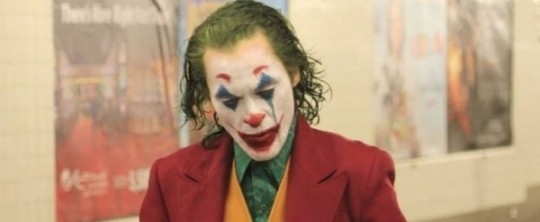
Nominated for a whopping 11 Oscars (equaling The Lord of the Rings: The Return of the King [which swept all 11], The Godfather [Parts 1 and 2], West Side Story, and Saving Private Ryan, among others), Joker should get an award for most divisive film of the year. Directed by Todd Phillips (yes, the same guy who directed The Hangover), Joker is a psychological thriller staring Joaquin Phoenix that provides a possible origin story for Batman’s arch-nemesis. Before becoming the Joker, Phoenix’s character, Arthur Fleck, dreams of becoming a famous stand-up comedian. His gradual descent into insanity, nihilism, and violence mirrors the chaotic anarchy slowly consuming the decaying Gotham City as its citizens revolt against the wealthy and better-off.
Despite the concerns surrounding Joker that it would inspire real-world violence, the film has grossed over one billion dollars, making it the first R-rated film to do so. Phoenix disappears into his role, and Icelandic composer Hildur Guðnadóttir’s haunting score brilliantly conveys the inner pain and turmoil in Arthur’s mind as well as the dying light of Gotham. (Guðnadóttir made history as the first solo woman to win a Golden Globe for best original film score.) In an interview with Forbes, Guðnadóttir explained the concept of her turbulent score. “In the beginning, it’s almost just like a solo cello, but in reality, there’s a whole symphony orchestra behind the cello. It’s almost like this hidden force that he doesn’t know about and as he starts to kind of discover what he’s gone through and what’s actually happened to him, the forces become louder and more aggressive. The orchestra takes over and almost eats the cello alive.”
Although Joker is a powerful film and and makes strong statements about mental illness and poverty, its gruesome, unhinged violence can be hard to handle. Everything is shown in graphic, bloody detail, making the thought of a repeat viewing undesirable. I also could have done without a couple of choices that were made involving the Waynes, especially one scene that we have seen over and over again.
Honorable Mention: Ford v Ferrari
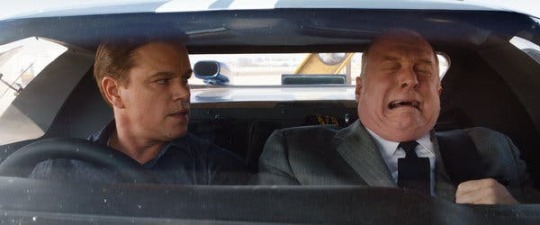
As someone who really does not care all that much about cars and their inner workings, this film did the one thing it needed to do for me: It made me come out exclaiming, “Yeah, cars!”
In all seriousness, James Mangold’s sharp direction smartly focuses not on the sport of racing but rather on its big personalities. Those personalities gripped me so much that I immediately started researching their lives after the film ended. The plot follows Carroll Shelby and Ken Miles as they are dispatched by Henry Ford II to dethrone the dominant Ferrari racing team with an American-made car. Along the way, they have to deal with mechanical setbacks and corporate interference to achieve their goal.
This film’s cast is outstanding. Matt Damon and Christian Bale’s deep but sometimes heated friendship as Shelby and Miles is the heart of the film. Tracy Letts as Ford II and Josh Lucas as Leo Beebe, senior executive vice president of Ford, give off the perfect amount of corporate stench to make them unlikable but not unbelievable. 14-year-old Noah Jupe comes off his great performance in 2018′s A Quiet Place to deliver another stellar outing here as Miles’ young son. However, Jon Bernthal felt a bit underused as Lee Iacocca, vice president of Ford, and Cautriona Balfe’s role as Mollie Miles, Ken’s wife, though well-acted, felt like it could have been removed entirely without much consequence to the film overall.
With a moving score and great cinematography, Ford v Ferrari unexpectedly tugged at my heartstrings, and the infectious passion Shelby, Miles, and these other characters have for cars managed to rub off on me, which might be the ultimate testimonial for this film.
Honorable Mention: 1917

1917 has been hyped as “that World War I movie with one continuous take,” but it is so much more than that. World War I was a stark clash between 20th-century technology and 19th-centry tactics. With soldiers largely trapped in trench warfare, conflicts commonly turned into battles of attrition. That does not exactly translate into exciting cinema, which explains why there are so many more films about World War II. Karl Vick acknowledges this in Time magazine, writing, “motion pictures do require a certain amount of motion, and the major accomplishment of 1917...may be that its makers figured out what the generals could not: a way to advance” (Karl Vick. Time. "Escaping the Trench". January 20, 2020. Page 38-41.)
What more can one say about Roger Deakins at this point? What he and director Sam Mendes created with the cinematography of this film is nothing short of fantastic. With its cinematic achievement of what is made to look like one continuous shot, 1917 presents most of its actors with only a small amount of screen time to make an impact, and they are more than up to the challenge. Mark Strong, Andrew Scott, Benedict Cumberbatch, Colin Firth, Richard Madden, and others all leave a lasting impression with their extremely short encounters with the film’s main characters, Lance Corporal Blake (Dean-Charles Chapman [Tommen!]) and Lance Corporal Schofield (George MacKay). Mendes places the bulk of the weight of the film on Chapman and MacKay’s shoulders, and they luckily carry it with natural ease. Working together with the one continuous take style, Thomas Newman’s riveting score keeps viewers on the edge of their seat and makes them feel like they are part of this life-or-death mission with the lance corporals.
If I had to list a couple of flaws with the film, I would say that one of the characters feels like he has untouchable plot armor. It almost seems like Mendes and company hope that the awe-inspiring cinematography will make viewers forgiving or even ignorant of the amount of times this character should be fatally shot or even injured, but I understand that some artistic license is necessary to convey the story they want to tell. The nature of the cinematography employed here also makes it difficult to get a grasp on distances and positioning because the shot is never really allowed to zoom out or give an aerial view since it is fixed on the lance corporals.
Unfortunately, I experienced this breathtaking film with one of my worst theater audiences of 2019. Much of the film was drowned out by the ladies sitting next to me who felt the need to constantly narrate everything that was happening on screen. “He’s going down into the trenches.” “Look! He’s jumping into the water.” Etc., etc. This is not your living room, people! If people want to talk over a film like this and provide running commentary and narration, they should wait for its home release. Your fellow audience members are not blind, and we would greatly appreciate it if you remained quiet.
#10: Spider-Man: Far From Home
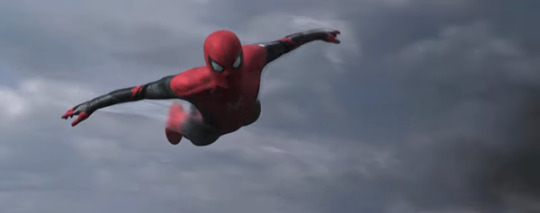
After Avengers: Endgame released earlier in the year, the spotlight promptly shifted to Jon Watts’ Spider-Man: Far From Home, and he did a tremendous job with this film. Serving as both the epilogue to Endgame and the sequel to Spider-Man: Homecoming, Far From Home effectively closes out phase three and sets the stage for the next era of the Marvel Cinematic Universe. Far From Home is the first Spider-Man film to pass the billion-dollar mark, and it is not hard to see how it managed to pull that off. The returning cast led by Tom Holland as Peter Parker/ Spider-Man retains its great chemistry, and Jake Gyllenhaal is the perfect choice to play Quentin Beck/ Mysterio, complete with a great theme from returning composer Michael Giacchino. Fans of Spider-Man have been waiting forever to see this character on the big screen, and I am happy to report the film does him justice. Watts especially knocks his character out of the park with a certain sequence about halfway through the film that I was beyond thrilled to see.
The film is set immediately after the events of Endgame and finds Peter and his high school class taking an international field trip to Europe. The writers do an amazing job explaining the ramifications of Endgame, and the way they weave plot details and character motivations together all the way back from phase one of the MCU is mind-blowing. Watts realizes that there needs to be some levity after Endgame, so this film is full of laugh-out-loud humor and charmingly awkward teen road-trip set-pieces. Oh, and did I mention it has one of the best mid-credits scenes in the entire MCU that dramatically alters the characters’ futures going forward?
#9: Toy Story 4
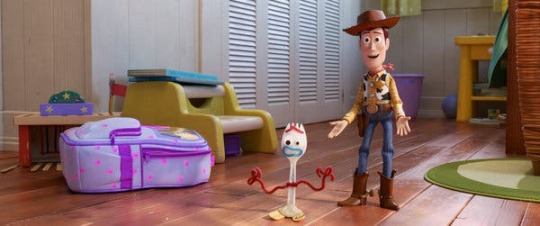
I have a deep personal connection to the Toy Story franchise. I grew up watching Toy Story and Toy Story 2 on repeat, and Toy Story 3 came out during my senior year of high school. Those who have seen that film know why it especially resonated with me at that age. In my opinion, Toy Story 3 ended the trilogy perfectly; there was no way another film could top its emotional ending. When I heard that Pixar was coming out with Toy Story 4, I was not going to pass up another opportunity to hang out with Woody, Buzz, and the gang, of course, (neither was anyone else, seeing as this is the highest grossing film of the franchise) but I set my expectations to a low, manageable level.
Although I was disappointed that Buzz and the rest of Andy’s old toys were not as heavily involved in the plot and did not have all that much time to interact with Woody, I was impressed overall with the new characters and was happy to see Bo Peep return. In this film, Bo breaks through her porcelain design and exhibits a character with total agency over her choices. Everything about her redesign and the way she carries herself is awesome. Keanu Reeves’ Canadian daredevil Duke Caboom steals every scene he is in, and Christina Hendricks’ Gabby Gabby gave me terrifying flashbacks to Talky Tina from the “Living Doll” episode of The Twilight Zone.
As audiences have come to expect from Pixar, the film delivers stunning animation and a signature big emotional gut punch, which it earns it by building up genuinely heartwarming moments throughout its run time that address themes such as the difficulty of change, the beauty of imperfection, the mystery of creation and the meaning of life, and the importance of serving others. As Matt Zoller Seitz writes for RogerEbert.com, “This franchise has demonstrated an impressive ability to beat the odds and reinvent itself, over a span of time long enough for two generations to grow up in. It's a toy store of ideas, with new wonders in every aisle.”
#8: Doctor Sleep

Writer-director Mike Flanagan took on the unenviable task of pleasing two different parties when Warner Bros. hired him in January 2018: fans of Stanley Kubrick’s The Shining from 1980 and Stephen King and fans of his books The Shining and Doctor Sleep. Somehow, he managed to pull it off.
After visiting the Timberline Lodge in Oregon, the location used in Kubrick’s film for the exterior of the Overlook Hotel, this past summer, I decided it was finally time to watch The Shining. I can attest it is just as much a masterpiece as many people say it is. My favorite part: it is a horror movie that does not rely on jump scares. When I heard the Flanagan wanted to chop away at the horror genre’s reliance on jump scares, I was even more excited to see Doctor Sleep. Flanagan said, “When we were developing the project and when we were talking about the metered expectations audiences have about, in particular, jump scares and startles and the pacing of those, which we’re utterly uninterested in this film, I would say, ‘What’s your favorite jump scare in The Shining?’ There isn’t one. The same is true here. We used a lot of the lessons that Kubrick taught us about how to do a psychological thriller, a supernatural thriller, in a way that is more about suffocating atmosphere and tension than it ever is about the kind of traditional scares as we understand them today.”
It is well known that King really disliked Kubrick’s adaptation of his book. He disliked it so much, in fact, that he wrote and executive-produced a new version with the 1997 television miniseries. In his approach to Doctor Sleep, Flanagan first read King’s book, which was published in 2013, and then consulted closely with the author to reconcile the differences between the book and film version of The Shining. After reading Flanagan’s script, King felt like his least favorite parts of Kubrik’s film had been “redeemed.”
Set several decades after The Shining, Doctor Sleep reunites audiences with Danny Torrance, played by everyone’s favorite Jedi, Ewan McGregor. Danny continues to struggle with the childhood trauma he endured at the Overlook Hotel during the events of The Shining, turning to alcohol to numb the pain and his psychic abilities. Meanwhile, the True Knot, a cult of psychic vampires led by Rose the Hat (Rebecca Ferguson), is on the hunt for children with psychic abilities like Danny’s, and they are hot on the trail of young Abra Stone, played by Kyliegh Curran in her feature film debut.
With the benefit of having just seen The Shining a couple of months before this film, I was able to appreciate Flanagan’s careful attention to detail. He is clearly a fan of both King and Kubrick, but he does not let his admiration for them impede his own creative vision. He expertly balances original content with just the right amount of fan service and callbacks to The Shining. Even without jump scares, the film has plenty of horrifying moments, especially one involving young actor Jacob Tremblay that echoed in my mind long after the film had ended. Ewan McGregor is fabulous, as always, convincingly portraying Dan’s fight with his inner demons, and Rebecca Ferguson looks like she is having a devilishly good time as Rose the Hat. Above all, I was surprised to learn that this was Kyliegh Curran’s film debut. She is so comfortable on camera and has painted a bright future for herself out of the darkness of this film.
Doctor Sleep gave me all sorts of chills down my spine, induced by the eerie atmosphere of certain scenes as well as extremely well-timed tie-ins to its predecessor, that left me hungry for even more Stephen King stories.
#7: Once Upon a Time in Hollywood
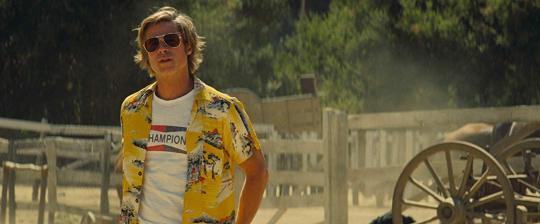
Set in 1969 Los Angeles, Quentin Tarantino’s ninth film stays true to its name and delivers an alternate version of events that unfolded in Hollywood that year. In addition to Sharon Tate, Roman Polanski, and the Manson Family, the film tells the story of fictional characters Rick Dalton and Cliff Booth. Dalton is a veteran Hollywood actor most famous for starring in a Western television series called Bounty Law who believes he is approaching the end of his career. Booth, a war veteran with a shady past, is Dalton’s best friend and longtime stunt double. Together, they attempt to navigate the final stretch of Hollywood’s Golden Age.
Leonardo DiCaprio and Brad Pitt work incredibly well together as Dalton and Booth, respectively, with neither star trying to outshine the other. Margot Robbie, on the other hand, does not get a lot of material to work with as Tate. (Do not tell Tarantino that.) Conversely, Julia Butters blew me away as Trudi Fraser, Dalton’s eight-year-old co-star in the pilot of a new American Western series. She more than holds her own acting side by side with DiCaprio.
Although the film moves at a slow pace, leaving me to wonder at times where this story was even going or if I was just watching a day in the life, Tarantino’s usual engaging, snappy dialogue entertains even when there is no real action happening on screen. With this being Tarantino, audiences have to accept his signature peculiarities, like close-up shots of feet, to be treated to another perfectly crafted soundtrack, complete with classic rock and roll, old-time DJ chatter, and period-accurate radio commercials. In the end, the slow pacing of Tarantino’s script actually helps enhance the heart-stopping standoff at the halfway point and the absurd payoff at the end. Clearly, this film is Tarantino’s passion project. In fact, he said it is “probably my most personal. I think of it like my memory piece... This is me. This is the year that formed me. I was six years old then. This is my world. And this is my love letter to L.A.” No wonder he publicly referred to it as Magnum Opus while he was writing it.
#6: El Camino: A Breaking Bad Movie
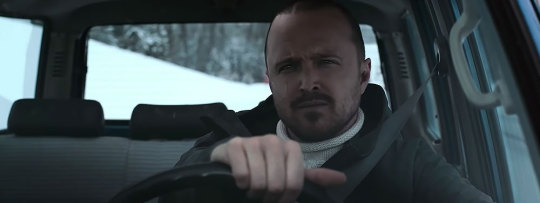
Written and directed by the creator himself, Vince Gilligan, El Camino serves as the epilogue to Breaking Bad, giving fans closure on certain questions and characters. Many favorites from the series return in some form or fashion (shout-out to Jesse Plemons for absolutely crushing his role here), but the focus always remains on Jesse Pinkman. Whereas Breaking Bad was Walter White’s story, El Camino puts Jesse center stage, and Aaron Paul gives one of the best performances of his career, fully tapping into his character’s desperate, damaged psyche.
Breaking Bad and Better Call Saul are two of my favorite television shows, and I think Gilligan is one of the best show runners in the business. He manages to incorporate the tone and atmosphere from the world of those two shows into this film seamlessly, and he rewards longtime fans with a nice amount of Easter eggs. Cinematographer Marshall Adams deserves so much praise for the jaw-dropping shots that grace the screen, especially the ones that show off the New Mexico landscape. He has an astonishing ability to make every frame look like a detailed painting. Editor Skip Macdonald should also be recognized for his work, particularly for the way his editing of Jesse searching for something in an apartment reinforces Gilligan’s non-linear revelatory style of storytelling.
El Camino does not waste any time with exposition, so someone who has not seen Breaking Bad cannot jump right into this film and understand what is going on. Then again, what rock have you been hiding under if you have not seen Breaking Bad at this point? What are you waiting for? Let this be your motivation to finally watch it, and then once you have made it through the series and El Camino, keep the good times rolling and watch Better Call Saul, which is just as good, if not maybe even a little better than, Breaking Bad.
#5: Jojo Rabbit

Only the whimsical genius of Taika Waititi could have concocted this irreverent, dark satire set against the backdrop of World War II Nazi Germany. Based on Christine Leunens’ book Caging Skies, Jojo Rabbit stars Roman Griffin Davis as the titular Johannes “Jojo” Betzler, a jingoistic 10-year-old German boy enrolled in the Hitler Youth. Jojo lives with his mother, Rosie, played by Scarlett Johansson. As far as Jojo knows, his father is fighting on the Italian Front, so he often turns to his imaginary friend, a wacky version of Adolf Hitler (Waititi), for advice and support as Germany becomes more desperate as the war starts to reach its conclusion.
Jojo Rabbit’s black comedy places viewers in plenty of predicaments in which they want to laugh, are not sure its entirely appropriate, but still end up doing so anyway. The film balances this out by keeping a good amount of heartrendingly emotional and genuinely sweet moments tucked up its sleeve. Waititi and Romanian cinematographer Mihai Mălaimare, Jr.’s visual storytelling is on a whole different level, carefully using ordinary imagery as subconscious foreshadowing, leading to one of the biggest breath-stealing shocks of the entire year that stopped my heart and rocked me to my core. Michael Giacchino seems to have been criminally overlooked by the Academy for his simultaneously jaunty and intimate score that adds yet another impressive layer to the film’s wide range of emotional beats. Living in a world fueled by hate, Davis, Johansson, and Thomasin McKenzie’s characters show how compassion and the willingness to try to come to a common understanding can change, and in some cases save, lives.
#4: Marriage Story
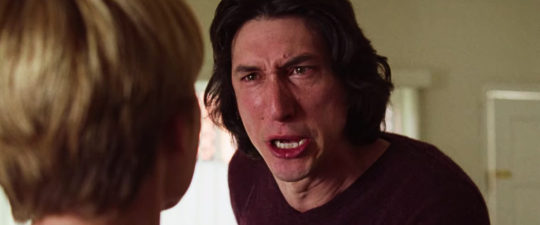
Writer-director Noah Baumbach paints what may be the most brutally honest picture of divorce I have ever seen on screen in Marriage Story. Before Marriage Story, I had never seen one of Baumbach’s films, but I get the sense from this film that he takes a very grounded approach to storytelling.
Marriage Story stars Adam Driver and Scarlet Johansson as Charlie and Nicole Barber. Charlie is an acclaimed theater director, and Nicole is his muse. Despite her acting skills, Charlie always receives all the praise, leaving Nicole to congratulate him from the back seat and contemplate what kind of professional movie and television acting career she possibly gave up to be with him. She also misses living in Los Angeles and being close to her family. At the center of this tenuous relationship is the couple’s young son, Henry. As things go from bad to worse in their relationship, Charlie and Nicole start down the path to divorce, initially wanting to approach everything amicably without involving lawyers, but quickly walking back on that as they begin to doubt each other’s motives and end goals, especially in regards to Henry.
Driver and Johansson both put on a masterclass of acting here, but I would have to give Driver my nod in choosing the stronger performance of the two. He is a tour de force in this film, unyielding to the unflinching camera. Alan Alda and Laura Dern keep pace with Driver and Johannson beat for beat as Bert Spitz and Nora Fanshaw, Charlie and Nicole’s lawyers. Baumbach smartly chooses not to wallow in the melodrama of the messy divorce, showing that small, flickering sparks of love still exist between Charlie and Nicole, maybe not enough to reignite the flame that brought them together in the first place, but enough to convince you that they still have a hope for some kind of happiness.
#3: Knives Out
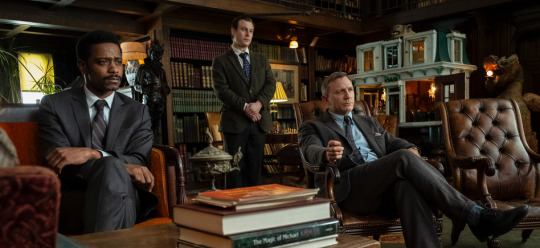
After the Internet firestorm that was Star Wars: The Last Jedi, Rian Johnson did the best thing he could have possibly done—he went far, far away from any established franchises, rounded up an all-star ensemble cast, and wrote and directed his own original murder mystery film. Through some ingenious plotting, Johnson revitalizes the entire genre and turns the classic whodunit on its head, all the while delivering some timely social commentary. Complete with Daniel Craig delivering a monologue about donut holes in a southern gentleman accent, Knives Out is an absolute delight.
The events of the film center around the Thrombey family, with the main mystery beginning after patriarch and rich crime writer Harlan Thrombey (Christopher Plummer) is found dead in an apparent suicide the morning after his big 85th birthday party with his family at his mansion. An anonymous source informs private detective Benoit Blanc (Craig) of Harlan’s death and hires him to investigate.
A huge fan of classical mystery thrillers and comedies, Johnson’s love of the genre is tangible, but he never allows the narrative to become overly meta, referential, or even reverential, for that matter. I have already mentioned Craig and how much fun he looks like he is having in his role as Blanc, but Ana de Armas breaks out as Marta Cabrera, Harlan’s caretaker, and is the heart of the film. The rest of this high caliber ensemble cast has its moments, and I only felt like a couple of the characters were completely disposable, such as Jaeden Martell’s Jacob Thrombey, for example.
Johnson keeps his audience on its toes for the entire film. Just when the solution seems obvious, he throws another twist at them to throw them off the scent. It is a true shame that Knives Out received only one nomination from the Academy, but Johnson more than deserves that nomination for best original screenplay.
#2: Avengers: Endgame
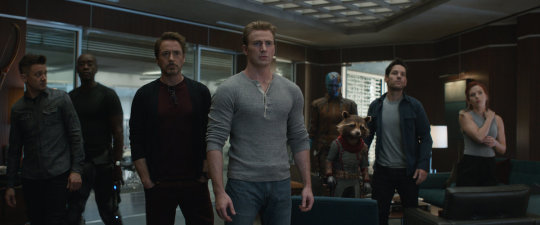
It has all led up to this, the culmination of phases one through three of the Marvel Cinematic Universe. Admittedly, I was not the biggest fan of Avengers: Infinity War; I did not care for its overall slow pacing. Avengers: Endgame, however, is everything I wanted in this grand finale of the Infinity Saga. Whereas Infinity War felt overcrowded, Endgame brings it all back home to the original Avengers team for the majority of its surprisingly swift 182-minute run time, allowing them to essentially take a victory lap before the next phase of this cinematic universe begins. In the interest of not giving anything away, I will keep this brief, and trust me when I say that I could go on and on talking about how much I enjoyed this film. I will just end by saying that directors Anthony and Joe Russo and producer Kevin Feige certainly reward the dedication of fans who have watched all 21 films leading up to Endgame, and Robert Downey, Jr. submits one of his best performances as Tony Stark/Iron Man. #ILoveYou3000
#1: Parasite

Far and away my favorite film of 2019 was Bong Joon-ho’s Parasite, a South Korean dark comedy home-invasion thriller about a poor family plotting to improve their circumstances by tricking an extremely wealthy family into hiring them by posing as unrelated, highly skilled individuals.
I came into this film ignorant of its premise, and I was completely floored. This is Bong Joon-ho in total control of his craft. Parasite has a mesmeric rhythm to it that is aesthetically energized, allowing the film’s strikingly bold tonal shifts to work so well. Every act increases the ever-present nail-biting suspense, supplemented by cinematic moments of pure genius like the nearly five-minute long montage towards the end of the first hour. Every single member of the cast knocks it out of the park, and there is enough social commentary to fuel college essays for years. The twists zig when you think they are going to zag; it is a truly wild ride. To put it quite simply, Parasite is a masterpiece.
The following are a list of films I saw from 2019, in no particular order:
· Glass
· How to Train Your Dragon: The Hidden World
· Captain Marvel
· Shazam!
· Avengers: Endgame
· Aladdin
· Booksmart
· Rocketman
· X-Men: Dark Phoenix
· Men in Black: International
· Toy Story 4
· Spider-Man: Far From Home
· Once Upon a Time in Hollywood
· Joker
· Parasite
· Jojo Rabbit
· The Lighthouse
· Doctor Sleep
· Ford v Ferrari
· Frozen II
· Knives Out
· Star Wars: The Rise of Skywalker
· 1917
· The Two Popes
· The Irishman
· Marriage Story
· El Camino
· Uncut Gems
· One Piece: Stampede
I somehow completely forgot I saw The Peanut Butter Falcon and absolutely adored it; I definitely recommend checking out this feel-good film.
My 2018 film list: https://kcaruth.tumblr.com/post/182182411291/movie-mania-top-10-of-2018
My 2017 film list: https://kcaruth.tumblr.com/post/171040800751/movie-mania-top-15-of-2017
My 2016 film list: https://kcaruth.tumblr.com/post/156340406236/movie-mania-top-15-of-2016
0 notes
Text
Chevy’s Shark-Themed Concept Cars: The Apex Predators of Auto Shows in the 1960s
One of our favorite non-automotive times of the year is upon us: Discovery’s Shark Week 2020 began on Sunday, Aug. 9. As such, we’re thoroughly in the mood for some automotive sharkdom, and we figured this is a great time to look back at some of Chevrolet’s cool shark-themed concepts of the 1960s.
1961 Mako Shark concept: Selling the new Corvette
Legend has it that the original Mako Shark concept car’s name and color scheme were inspired by the real thing—specifically, a mako shark that GM styling chief Bill Mitchell caught himself and had mounted in his office. The story goes that Mitchell insisted that the blue-grey-white blending on the show car exactly match the shark, and when his staff couldn’t get the car painted to his satisfaction, they stole the shark from his office and repainted it to match the car. Mitchell, the story goes, never knew the difference.
The Mako Shark, otherwise known as XP-755, was built in 1961 as a preview of the second-generation Corvette, which was due as a 1963 model. The styling theme for the redesigned sports car had long since been developed, as seen on the 1957 Q Corvette concept and the 1959 Stingray racing car. The Mako Shark’s job was to travel the auto show circuit and get the public ready for the look of the new Corvette. The “gills” ahead of the front fender and the double-bubble roof were unique to the concept, as were the flip-up “brake flaps” on the deck lid, but the general shape was close to the production C2.
In keeping with its intended purpose, the Mako Shark was fully functional, and you can see it driving in this clip from an episode of Route 66 that aired in the fall of 1961. The XP-755 was modified over its lifetime, losing the double-bubble roof and gaining a new hood and a circular emblem in the grille (and a miniature chrome bumper at the edge of the nose to protect it). The car was ultimately powered by a 1969-vintage ZL1 427-cubic-inch (7.0-liter) big-block. Today, the Mako Shark I resides in the collection of the General Motors Heritage Center.
1965 Mako Shark II: The C3 Corvette emerges from the depths
In 1965, Chevrolet produced the Mako Shark II. Two of them, actually. First a non-running full-size model and then a running, driving prototype with a 427-cubic-inch V-8 under the hood. Unlike the original Mako Shark (now known as the Mako Shark I), the non-runner was the car that got management approval for the third-generation Corvette’s styling, which was subsequently scheduled for production as a 1967 model, though development was eventually delayed until 1968.
Testing of the Mako Shark II revealed modifications required for production. The front fenders and rear window were reworked for better visibility, while the nose was reshaped to reduce front-end lift. Still, if you compare the Mako II with the production C3, it’s remarkable how close the two cars appear. Not everyone was happy with the changes, and a couple of companies produced kits to turn the latest Corvette into something that more closely resembled the show car. More recently, a running replica was built by a Corvette enthusiast in Switzerland.
Unlike the Mako Shark I, the Mako Shark II is no longer in existence—not exactly, that is. The non-runner was scrapped, while the running car was restyled to become the 1969 Manta Ray concept, which can now be found with the Mako Shark I in the GM Heritage Center.
1964 Chevy II Super Nova: A shark by any other name
In between the two Mako Sharks, Chevrolet created another shark-themed concept based on the Chevy II Nova coupe, with styling that followed themes established by the 1963 Buick Riviera. Officially, the car was known as the 1964 Chevy II Super Nova. Unofficially, it was known simply as the Shark.
The Super Nova was shown at the 1964 World’s Fair, but alas, archrival Ford was showing its own sporty two-door across the hall. Ford’s Mustang was a production-ready model, and while Chevrolet didn’t take it seriously at the time, its runaway sales proved that Chevy would need something better than a restyled Nova in order to compete. Chevy went back to the drawing board and developed the 1967 Camaro. However, several of the Super Nova’s styling cues were seen on the facelifted 1966 Chevy II.
The caption for the photo above, taken at GM’s space-themed World’s Fair display, shows the Super Nova with its “performance analyzer capsule” and accurately predicts a future innovation: “In the year 2000, mechanics will be highly-trained technicians capable of operating the electric performance analyzer capsule. A computer supplies the DelcoNauts with information concerning the car’s operation according to manufacturer’s specifications, tells them what needs to be repaired, and how much the service will cost the customer.” GM was right about the device but off on the timing, as the company implemented a fledgling on-board diagnostics system in 1980, and OBD-II became mandatory in 1996.
Chevrolet’s Shark Concept Cars
Mako Shark
Introduced in 1961
Previewed the upcoming 1963 Corvette
Later restyled and given a new engine
Preserved at the GM Heritage Center
Mako Shark II
Introduced in 1965
Served as the styling concept for the third-gen Corvette
Running version restyled as the 1969 Manta Ray concept
Manta Ray preserved at the GM Heritage Center
Chevy II Super Nova
Introduced in 1964
Previewed updates to the 1966 Chevy II and the 1967 Camaro
Modeled a primitive version of on-board diagnostics (OBD)
Disposition unknown
The post Chevy’s Shark-Themed Concept Cars: The Apex Predators of Auto Shows in the 1960s appeared first on MotorTrend.
https://www.motortrend.com/news/chevrolet-shark-themed-concept-cars/ visto antes em https://www.motortrend.com
0 notes
Text
Weekly Digest, January 20
Monday newsletter published by Data Science Central. Previous editions can be found here. The contribution flagged with a + is our selection for the picture of the week. To subscribe, follow this link. Featured Resources and Technical Contributions * Key Graph Based Shortest Path Algorithms - Part 1: Dijkstra's And Bellman-Ford + * Portfolio optimization with Quantum Computing * Multi Gigabyte R data.table for Ohio Voter Registration/History * Importance of Hyper-parameters in Model development * Deep Learning from first principles in Python, R and Octave * Docker in 10 minutes * Scene-rendering with Google's DeepMind * 5 Most Preferred Programming Languages for AI Engineers in 2020 * HandWiki encyclopedia of datascience * Typo Fixes in ML Coding in a Weekend Featured Articles * Why the Concept of “Citizen Data Scientist” Terrifies Me * Business Analytics vs Data Analytics in One Picture * Just How Much Does the Future Depend on AI? * How Can Companies Get The Most Value Out Of Their Data * 2020 Challenge: Unlearn to Change Your Frame * Ten strategies to implement AI on the Cloud and Edge * Machine Learning in Finance: Benefits, Use Cases and Opportunities * Top Data Science Use Cases in HR * Machine Learning in Banking – Opportunities, Risks, Use Cases * RPA + Machine Learning = Intelligent Automation * Does Big Data Impact Business Mobile App Development? * Blockchain for Fintech: now and tomorrow Picture of the Week Source: article flagged with a + From our Sponsors * Weaponizing Data in the Fight Against White Collar Crimes To make sure you keep getting these emails, please add [email protected] to your address book or whitelist us. To subscribe, click here. Follow us: Twitter | Facebook. http://bit.ly/2Rw4K1b
0 notes
Photo
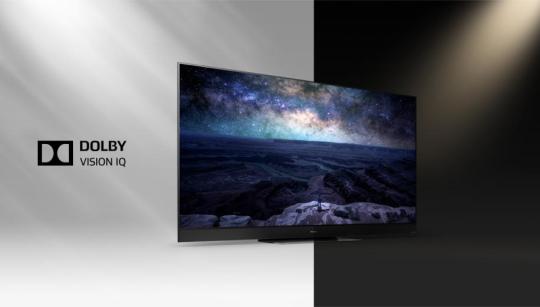







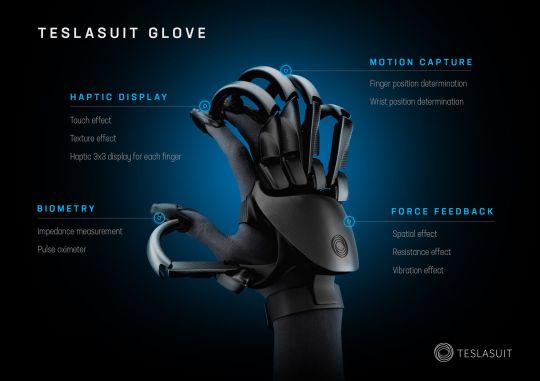

CES 2020 | Top 20
HZ2000 OLED TV (Master HDR OLED Professional panel supporting Dolby Vision IQ and Filmmaker Mode) by Panasonic
Filmmaker Mode by UHD Alliance
Simulated Reality Development Kit (32” 8K Spatial Desktop machine) by Dimenco
ThinkPad X1 Fold (13.3″ OLED Foldable Display, up to 1TB NVMe, Win 10 Pro, up to 11hr battery) by Lenovo
Looking Glass 8K Immersive Display by Looking Glass Factory
ConceptD 7 Ezel (Pro) Notebook (with Nvidia Quadro RTX 5000) by Acer
Q950TS 8K QLED TV (Infinity Screen) by Samsung
ThinkVision Creator Extreme (27" HDR1000, 1152 mini-LED zones and 10,368 LEDs for dynamic local dimming) by Lenovo
ConceptD 700 Workstation by Acer
DoubleTake (the next-generation in digital binoculars) by NexOpticTech
ONE R 1-Inch Edition (co-engineerd with Leica) by Insta360
Teslasuit Glove by Teslasuit
Bluetooth LE Audio Standard (The Next-Generation of Bluetooth Audio) by Bluetooth SIG
Smartglasses Light Drive System (World’s first all-day transparency smartglasses solution) by Bosch
JBL Bar 9.1 True Wireless Surround Sound (supports Dolby Vision & Atmos, Airplay 2 and Chromecast) by JBL
Vidrian Mini-LED TV (World’s First Mini-LED TV) by TCL Electronics
etee (Complete Control in 3D) by TG0
Envy 32 All-in-One Workstation (with Nvidia RTX graphics) by HP
Lyve Drive Mobile System (collection of modular storage solutions) by Seagate
Ultra High Speed HDMI Cable Certification Program by HDMI Licensing Administration
What also caught my eye
Meural Canvas II (photography—all in one frame) by Meural (Netgear)
Elevate P-Series model Soundbar (sports rotating speakers and support for Dolby Atmos and DTS:X) by VIZIO
Trio Wireless Charging Pad by Satechi
TBT3-UDZ Thunderbolt 3 and USB-C Docking Station (with 10GbE, 100W charging) by Plugable
NVMe PCIe Gen 4.0 M.2 SSD by Kingston Technology
Canvas Plus line SD UHS-II Cards by Kingston Technology
HomeKit Smart Lock (uses physical NFC keys) by Netatmo
90″ See-Through Display by Sharp
Airmega (works with Google Assistant) by Coway
OptiPlex 7070 Ultra by Dell
BLK2GO by Leica Geosystems
360 Anywhere (8K Portable 360º Camera) by Teche
EyeOn (eye-powered tablet control) by EyeTech
Smart Frame (digital picture frame) by Lenovo
VG-879 8K HDR Digital Video Signal Generator (HDMI 2.1) by AstroDesign
VA-1847 HDMI 2.1 Protocol Analyzer by AstroDesign
Mimic Go by Smart Mimic
Dock Wave (Wireless Charger, Powerbank and Docking Station) by Alogic
Ultra HD VR Eyeglasses by Panasonic
Home Center 3 by Fibaro
ATOM 500 Wireless Video System by Vaxis
XTAL 8K VR Headset by VRgineers
Pimax Vision Artisan VR Headset by Pimax
Pimax 5K SUPER VR Headset by Pimax
Amplify Glass Anti-Microbial Screen Protector by Otterbox
Go:Livecast (Livestreaming Studio for your phone) by Roland
A-88MKII Keyboard (with MIDI 2.0 and USB-C) by Roland
Tiger Lake Processors (Next-generation Core mobile platform) by Intel
DG1 Discrete Graphics Card (Xe GPU platform) by Intel
Horseshoe Bend 17″ foldable OLED Tablet Concept (with Tiger Lake mobile processor platform) by Intel
Thunderbolt 4 ( four times as fast as USB 3.0) by Intel
Portégé X30L-G 13″ Notebook by Dynabook (Toshiba)
HD 350BT/450BT Wireless Noise-Cancelling Over-ear Headphones by Sennheiser
Pro Rugged Memory Card Collection by Manfrotto
Xsens DOT (Precision Motion Tracking) by Xsens
The Wall Micro LED TV (new sizes) by Samsung
LG Signature Rollable OLED TV by LG
Project Archery 2.0 Headset Display by TCL Electronics
LG Signature 8K OLED TV R by LG
LG Cylinder OLED by LG
LG Light Field OLED by LG
H9G Quantum 4K ULED TV (180 Local Dimming Zones, 1000-nits PB, Quantum Dot WCG, Dolby Vision & Atmos) by Hisense
A9S 4K Master Series OLED TV (with support for Airplay 2 and HomeKit) by Sony
Z8H 8K Full Array LED TV (with support for Airplay 2 and HomeKit) by Sony
Laser TV L5 Series Ultra Short Throw Laser Projector by Hisense
3D Real-Time Video Camera (Light Field) by Wooptix
Predator CG552K 55” UHD OLED Gaming Monitor (120Hz Nvidia G-Sync) by Acer
M-Byte e-SUV by BYTON
Ocean EV Crossover by Fisker
Mustang Mach-E by Ford
Vision AVTR Electric Concept Car by Mercedes
Vision-S Electric Concept Car by Sony
AI:Me Self-driving Concept Car by Audi
Virtual Visor by Bosch
SenseGlove DK1 by SenseGlove
IQbuds² MAX Smart Earphone (with Hybrid Active Noise Cancellation) by Nuheara
NextMind Dev Kit by NextMind
Smart Tab M10 FHD Plus 2nd Gen (with Google Assistant) by Lenovo
ThinkBook Plus (with E Ink Display) by Lenovo
8K Signal Generator by Murideo
Wi-Fi 6E Standard by Wi-Fi Alliance
Mevo Start (livestreaming video camera) by Mevo
50mm F1.8 Anamorphic Lens (for APS-C) by SIRUI
Q9U XLR/USB Dynamic Broadcast Microphone (with XLR output and 24-bit/96kHz USB-C connectivity) by Samson
RZ-S500W Wireless Earbuds (with Dual Hybrid Noise Cancelling Technology) by Panasonic
EAH-AZ70W Wireless Earbuds (Dual Hybrid Noise Cancelling Technology) by Technics
Galaxy Chromebook (with 13.3″ 4K AMOLED screen) by Samsung
ONE R (Twin Edition) by Insta360
GPS Smart Remote by Insta360
10th-gen H-series Processors by Intel
ZenBook Duo Dual-Display Notebook by ASUS
Chromebook Flip (with Intel 10th Gen. processors) by ASUS
48″ 4K OLED TV by LG
Hexagon Light Panels by Nanoleaf
Learning Series by Nanoleaf
8TB SSD Slim Prototype Drive (with transfer speeds up to 20Gb/s) by SanDisk
Dual Drive Luxe USB-C (1TB Dual Connector Drive) by SanDisk
PowerBlock lineup GaN-Based Wall Chargers (come in 30W, 45W, and 96W) by Griffin
Omnia Series GaN-Based Wall Chargers by Aukey
Wemo WiFi Smart Plug (integrate’s with HomeKit, Alexa and Google Assistant) by Wemo (Belkin)
Wemo Stage Control Accessory (integrate’s with HomeKit) by Wemo (Belkin)
Boost Charge USB-C GaN Wall Chargers (come in 30W, 60W, and 68W) by Belkin
Boost Charge 3-in-1 Wireless Charger by Belkin
Boost Charge Dual Wireless Charging Pads by Belkin
Boost Charge Wireless Charging Stand and Speaker by Belkin
Boost Charge Wireless Car Charger by Belkin
Boost Charge Portable Wireless Charger and Stand Special Edition by Belkin
Velop WiFi 6 System by Linksys
Linksys Wellness Pod by Linksys / Origin Wireless
Wacom ONE FHD Pen Display (with support for Android) by Wacom
Soundform Elite HiFi Smart Speaker (with Google Assistant) by Belkin
Chora Speaker Range (with incorporated Dolby Atmos technology) by Focal
Concept UFO by Alienware (Dell)
Concept Duet (dual-screen laptop) by Dell
Concept Ori (folding tablet PC) by Dell
Ryzen 7 4000-series Processors by AMD
Threadripper 3990X (64-core, world's fastest processor) by AMD
Radeon RX5600 Series GFX Cards by AMD
Nighthawk AX6 AX5400 WiFi 6 6-Stream Router (RAX50) by Netgear
Nighthawk Mesh WiFi 6 System (MK62) by Netgear
Netgear AX1800 4-Stream WiFi 6 Mesh Extender (EAX20) by Netgear
Ballie Robot Assistant by Samsung
HDMI Surge Protector by Metra
Junior3 EDID Regenerator by Metra
D780 DSLR Camera by Nikon
Coolpix P950 Superzoom by Nikon
EOS-1D X Mark III DSLR Camera (FF CMOS Sensor, 4K60 10-Bit 4:2:2, Canon Log and 5.5K Raw Video) by Canon
Mirage Smart Speaker (Immersive Sound Experience with Flexible AMOLED Display) by Royole
RoWrite 2 by Royole
RoTree (display tree) by Royole
NC10 series Mini PC (based on Intel Whiskey Lake) by Shuttle
LG Signature WineCellar by LG
SoundSticks 4 (Celebrates 20 Years of Iconic Speaker Design) by Harmon Kardon
Vizio OLED TV by VIZIO
P-Series Quantum X LED LCD TV (792 dimmable light zones) by VIZIO
Hades Canyon NUC (NUC 8) by Intel
The Frame (new sizes) by Samsung
Sero TV (Horizontal/Vertical Screen) by Samsung
HDfury Diva triggering UHD Alliance Filmmaker Mode by HDfury
Q91 75″ 8K IPS LED TV (with Dolby Atmos 2.1.2) by Skyworth
RealMax 100 (100.8° Large FoV AR Glasses) by RealMax
Muzo (Portable App-enabled Sound Machine) by Celestial Tribe
LoCoMoGo (learn code through play) by LoCoMoGo
AONIC 50 Wireless Headphone by Shure
AONIC 215 Wireless Earbuds by Shure
Deco Wi-Fi 6 Mesh Routers by TP-Link
Inspire Studio by Zotac
ZBOX Edge MI643 (Mini PC) by Zotac
EF-100 Smart Streaming Wireless Laser Projectors (with Android TV) by Epson
Codi (Interactive AI-enabled Smart Toy) by Pillar Learning
Smart Doorlock (with Apple HomeKit support) by Netatmo
Nixplay N by Nixplay
Neo 2 Eye VR Headset (world’s first commercial standalone VR headset with native eye tracking) by Pico / Tobii
Thunderbolt 3 Pro Dock (featuring 10GbE) by OWC
Elite Dragonfly G2 Notebook by HP
Spectrex360 15″ Convertible Notebook (with 4K OLED Screen option) by HP
COLORFUL ProMaster H1 by Colorful Technology
HaptX Gloves by HaptX
RoomMe with support for Alexa, Google Assistant, Siri by Intellithings
ThinkCentre M90a AIO (All-in-One Desktop PC) by Lenovo
ThinkSmart View (Microsoft Teams) by Lenovo
VAVA 4K Dash Cam by VAVA
Arlo Pro 3 Wireless Floodlight Camera by Arlo (Netgear)
Kamvas 13 Pen Display (featuring dual Type-C ports) by Huion
Club ONE over-ear Headphone (with True Adaptive Noise-Cancellation technology) by JBL
Gaming/esport related
Aegis Ti5 (The World’s First HMI Oriented Gaming Desktop) by MSI
MEG381CQR (The World’s First HMI Oriented Curved Gaming Monitor) by MSI
MEG342CQR (The World’s First 1000R Curved Gaming Monitor) by MSI
Optix MAG161 Portable IPS Monitor (Type-C, 240Hz) by MSI
UpStream Pro Video Production Switch (all-in-one multi-channel mixer) by IOGEAR
UpStream 4K Game Capture Hub (capture, mix, and stream live videos in HD UVC format) by IOGEAR
BIG O 2020 Edition (features liquid cooled PC with an integrated Xbox or PS4, and an Elgato 4K60 capture card) by ORIGIN PC / Corsair
Quantum Series Gaming Headphones (with echo-cancelling boom mics) by JBL
Key Light Air by Elgato
4k60 S+ (Portable Dedicated HEVC 4K60 HDR Video Capture over USB 3.0 and/or an SD card) by Elgato
Corsair iCUE now works with ASUS Aura Sync by Corsair / ASUS
FireCuda Gaming SSD (Portable NVMe SSD, USB 3.2 Gen 2x2, up to 2TB, and customizable RGB lights) by Seagate
BarraCuda Fast SSD (Portable SSD up to 2TB with USB-C up to 540MB/s) by Seagate
Legion M600 Wireless Gaming Mouse by Lenovo
Legion M300 RGB Gaming Mouse by Lenovo
Legion K300 RGB Gaming Keyboard by Lenovo
Xenia 15.6″ Gaming Laptop by XPG
Zephyrus G15 Notebook (AMD Ryzen 7 4800HS-powered) by ASUS
Zero 2 Controller (for Nintendo Switch) by 8Bitdo
Odyssey G9 Gaming Monitor (5120x1140 @ 240Hz) by Samsung
ROG Swift 360 (World’s First 360Hz Monitor powered by Nvidia G-Sync) by ASUS
ROG (Republic of Gamers) Strix GA/GT Gaming Desktops by ASUS
ROG (Replublic of Games) Zephyrus G14 (The World’s Fastest 14” Gaming Laptop) by ASUS
Zotac VR backpack (with Nvidia RTX graphics) by Zotac
Legion Y740S Gaming Laptop by Lenovo
Legion BoostStation eGPU by Lenovo
G5 15 SE Gaming Laptop by Dell
Alienware 25 Gaming Monitor (AW2521HF) by Alienware (Dell)
Cloud Flight S Headset (with Qi wireless charging) by HyperX
ChargePlay Base (15W) by HyperX
Archer GX90 AX6600 Tri-band WiFi 6 Gaming Router by TP-Link
Sila (5G Home Router Concept) by Razer
Tomahawk (Gaming Desktop & Chassis) by Razer
NC100 Enclosure by Cooler Master
Arcadeo Gaming Chair (The World’s First Connected Gaming Chair) by Arcadeo
LEO Cabinet System (The World's First Self Service VR Arcade) by VRLEO
AORUS RTX 2080 Ti Gaming Box (he World's First Water-cooled eGPU) by Gigabyte
AORUS RAID SSD 2TB Expansion Card by Gigabyte
AERO 15 OLED Notebook for Creators (240Hz) by Gigabyte
AERO 17 HDR Notebook for Creators (144Hz) by Gigabyte
#CES#CES2020#Consumer Electronics Show#Las Vegas#NV#Innovation#Technology#Tech#Development#Prototype#Audio#Video#TV#Internet#IoT#Digital Assistants#AI#8K#UHD#VR#Virtual Reality#AR#Augmented Reality#MR#Mixed Reality#Immersive#Storytelling#Media#Smart Home#Future
0 notes